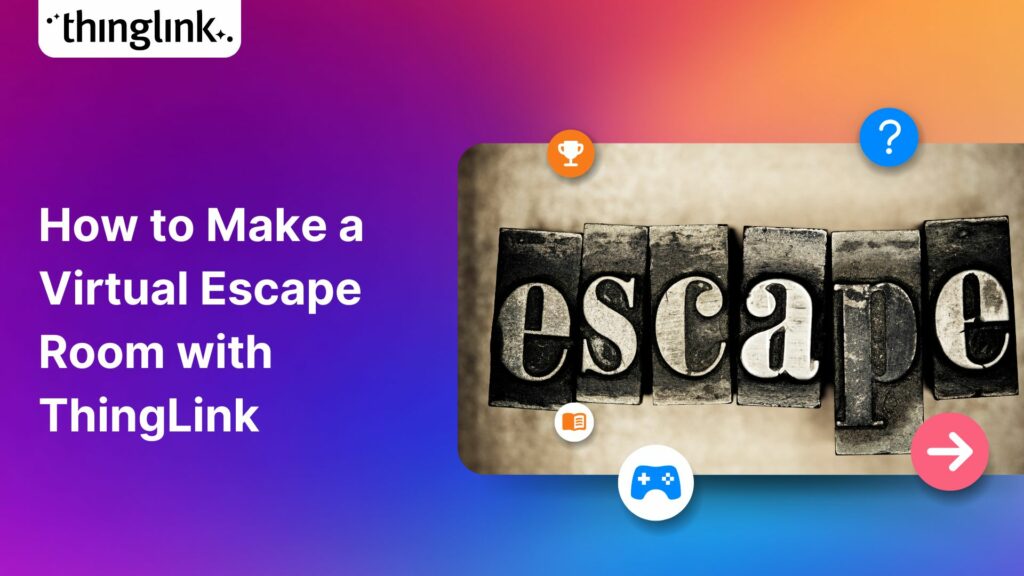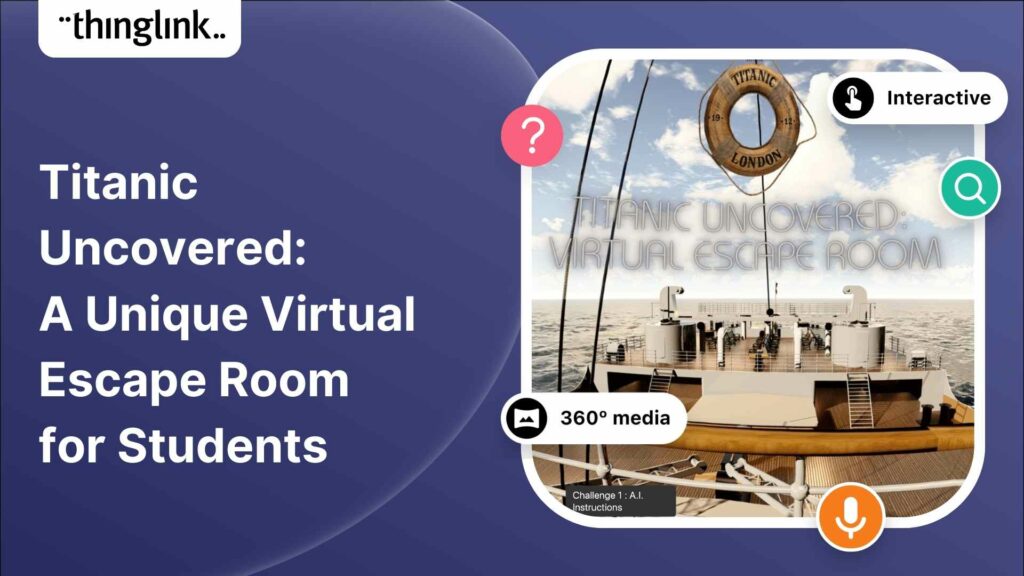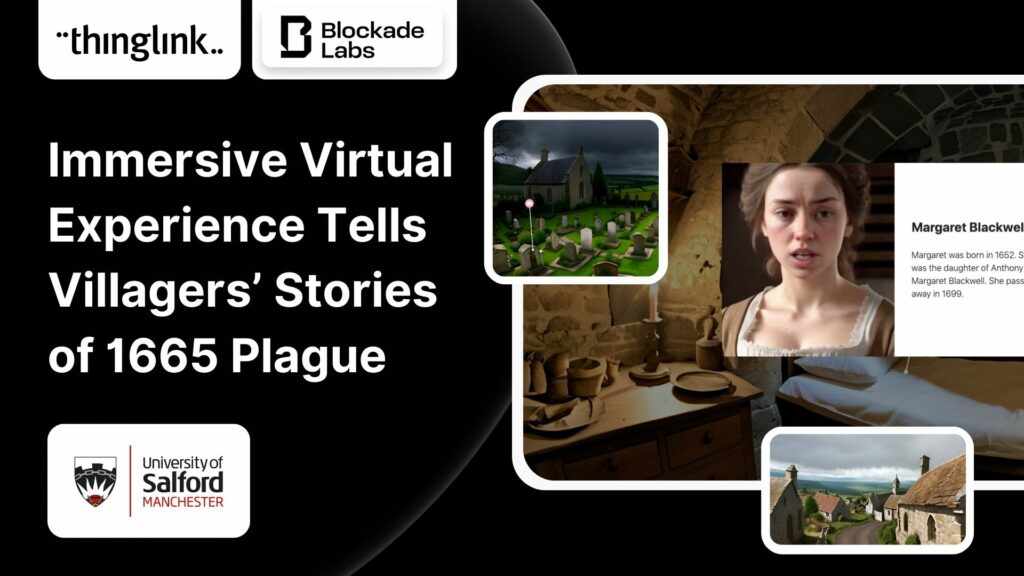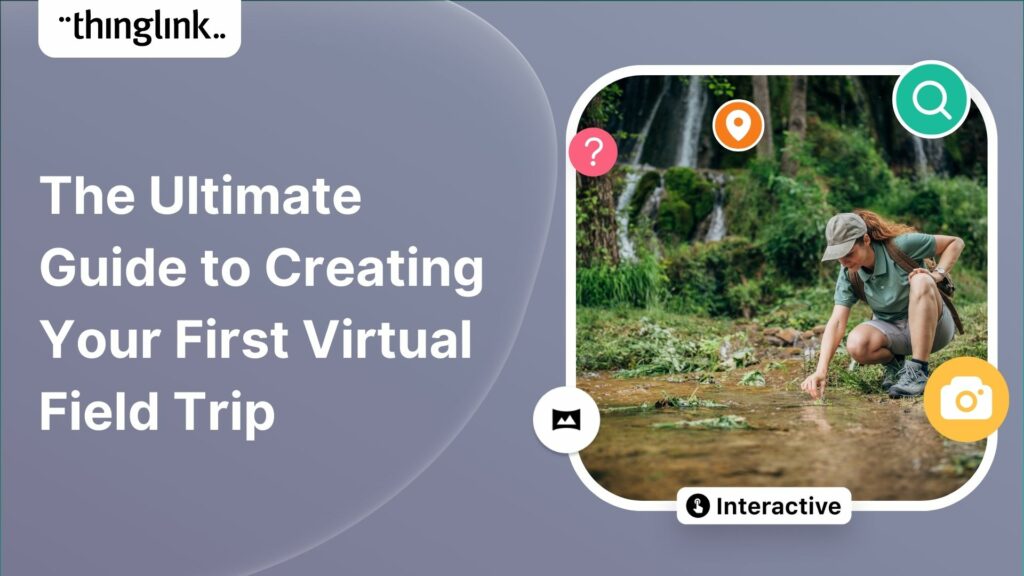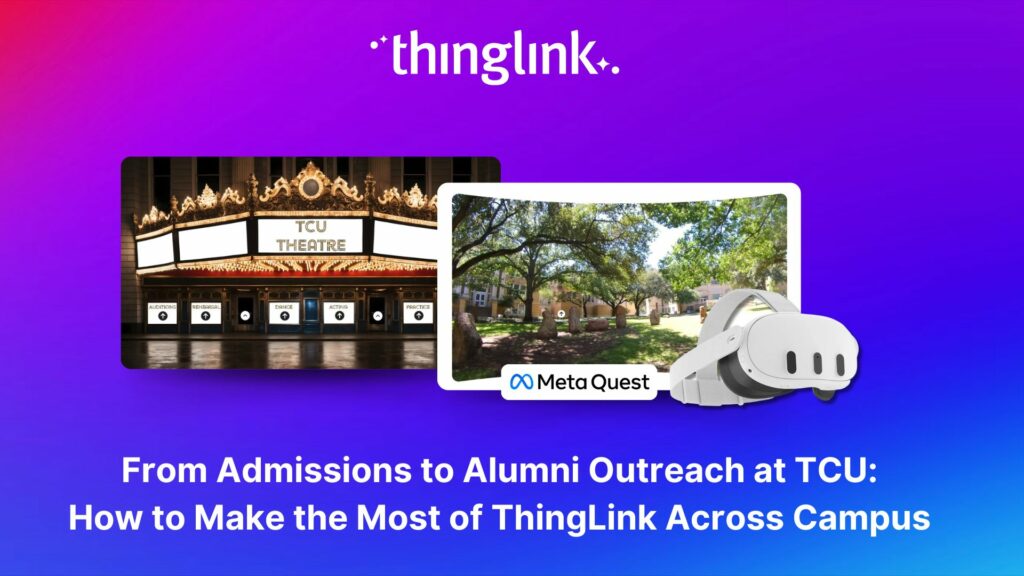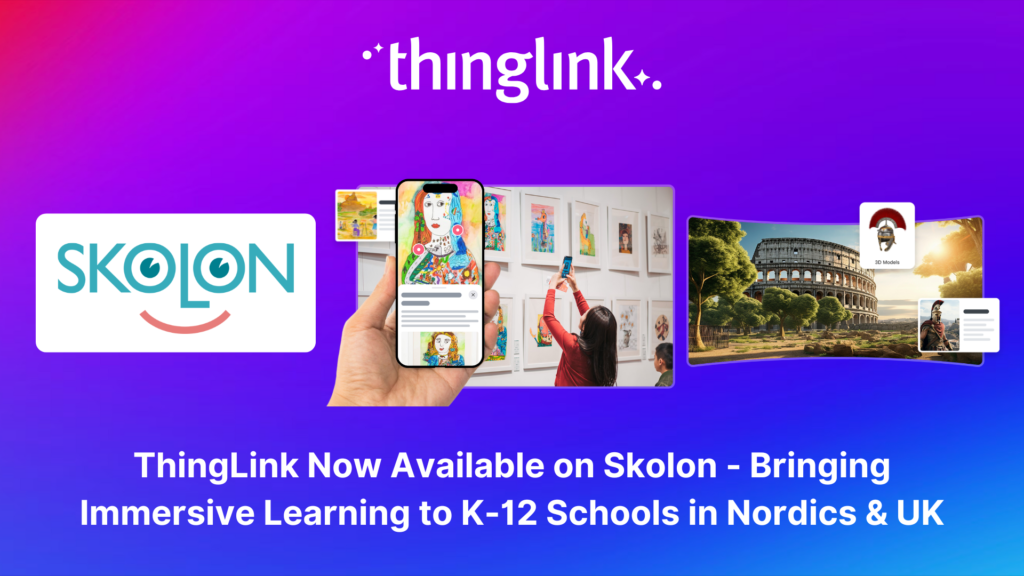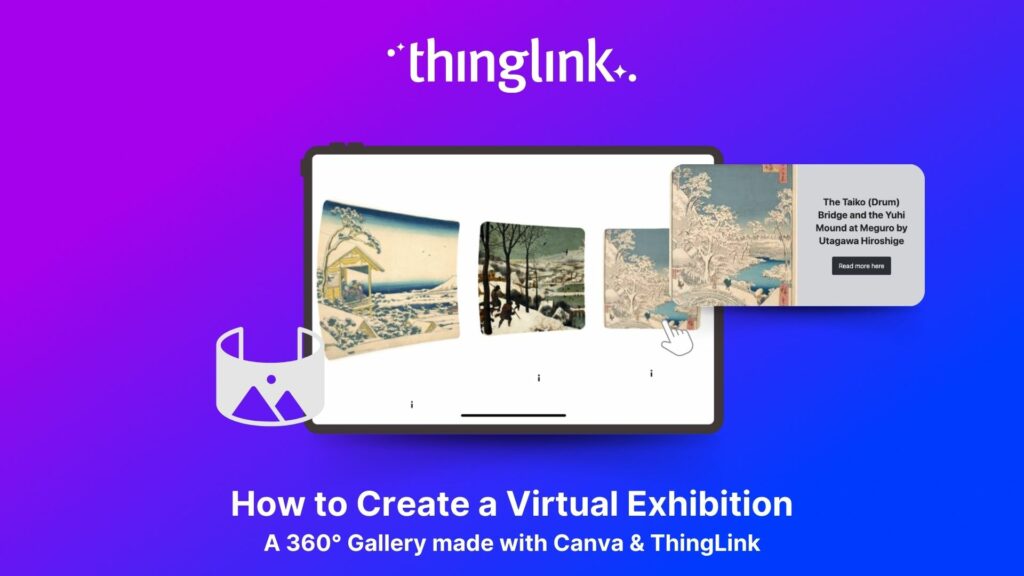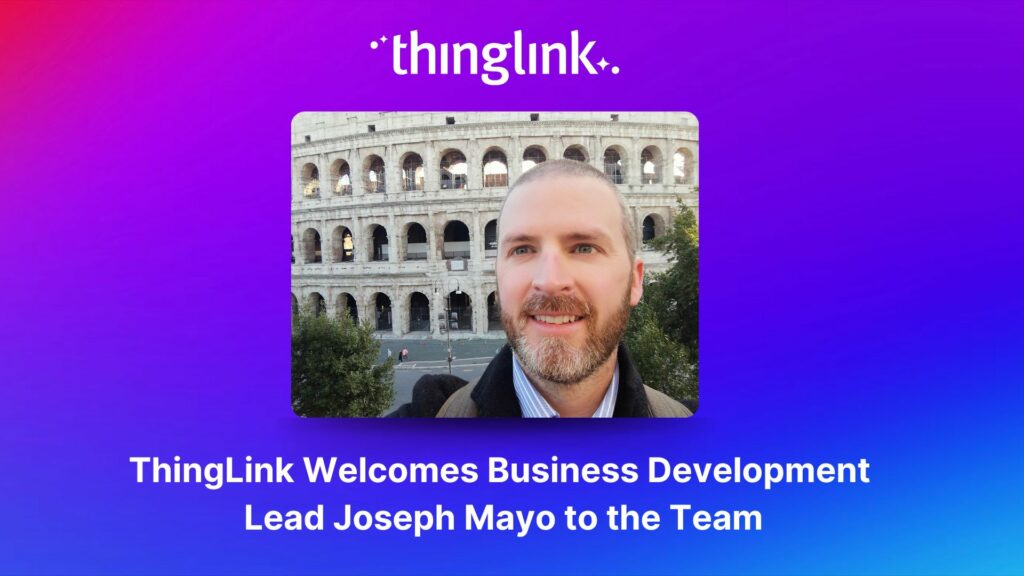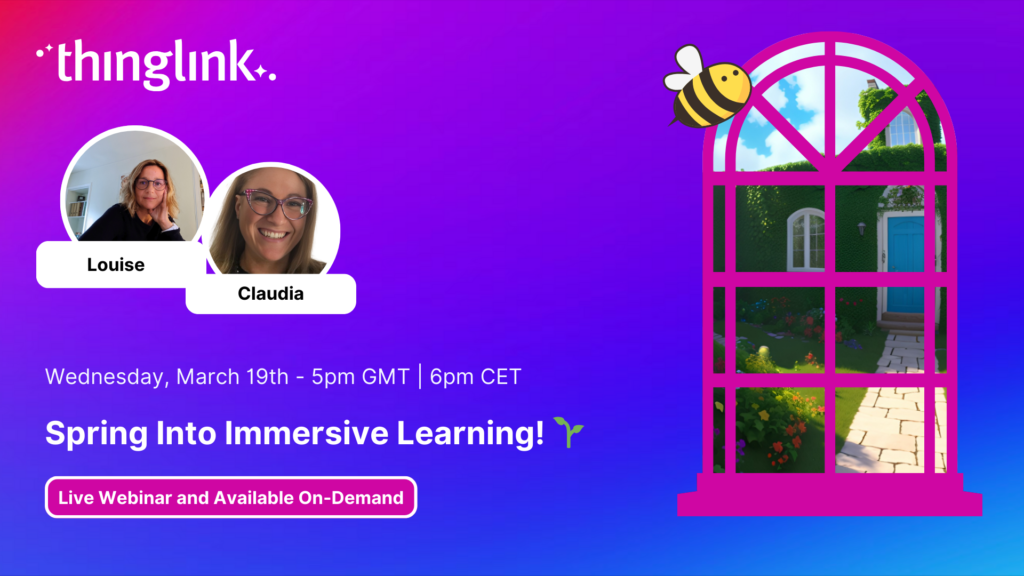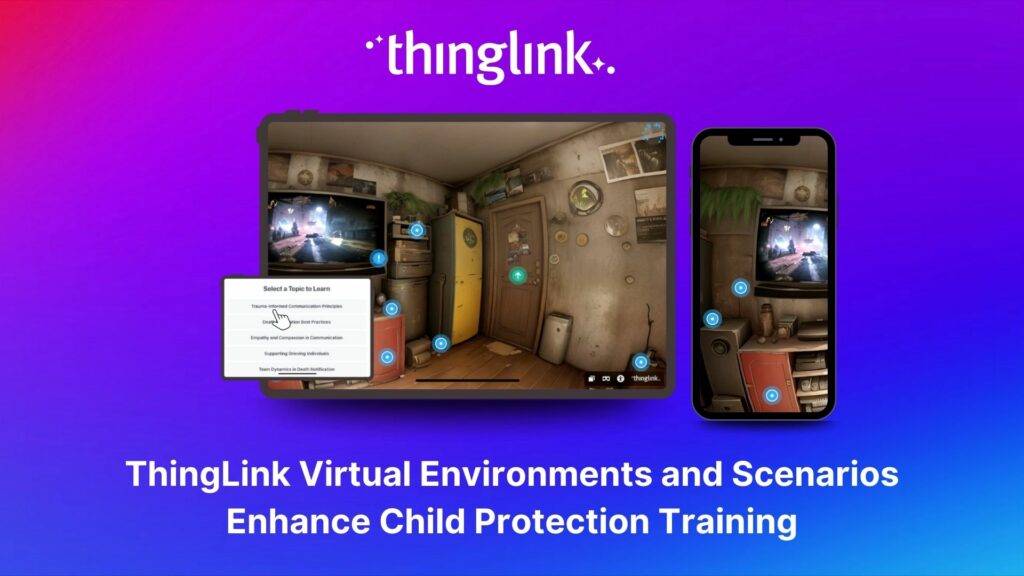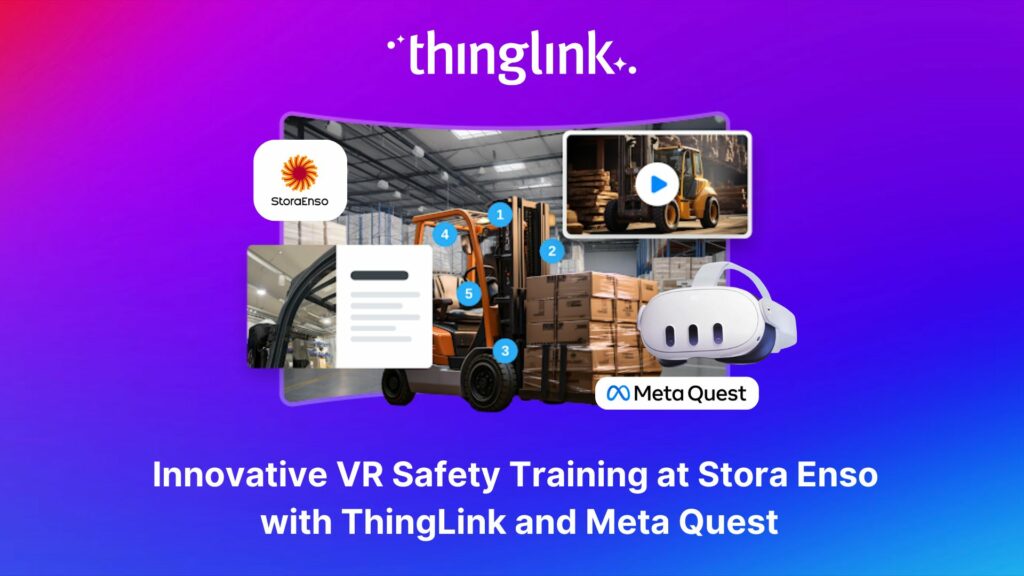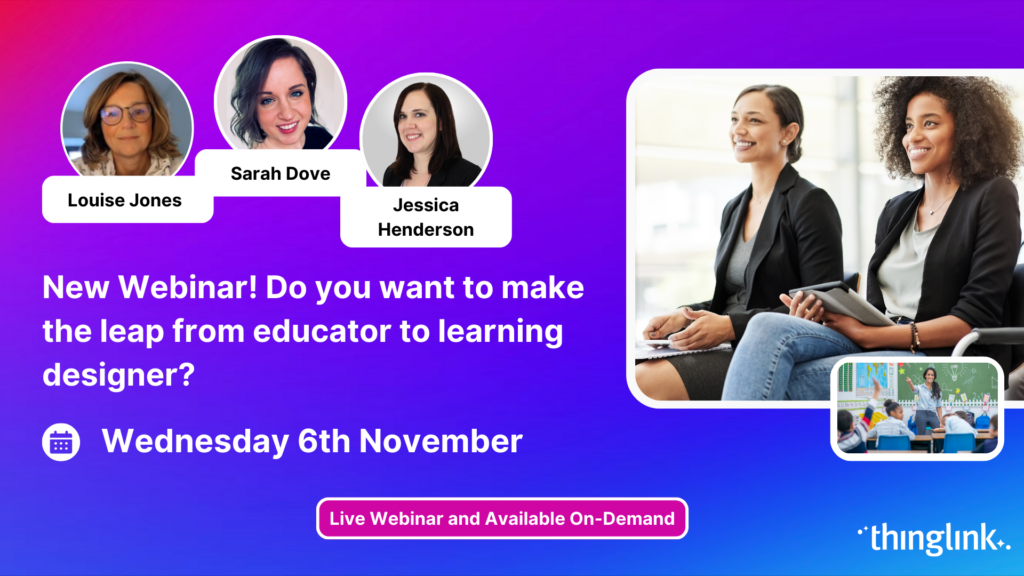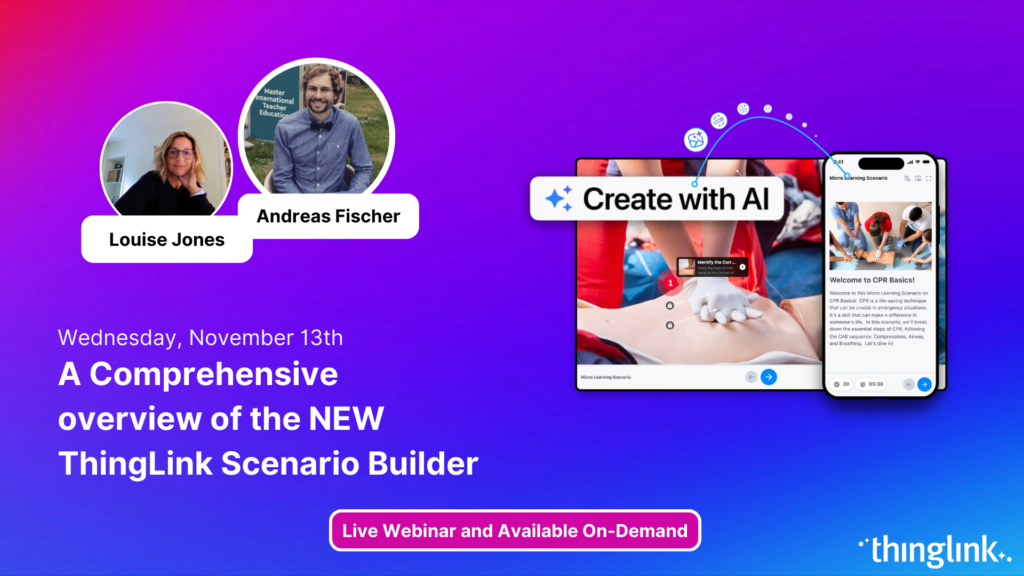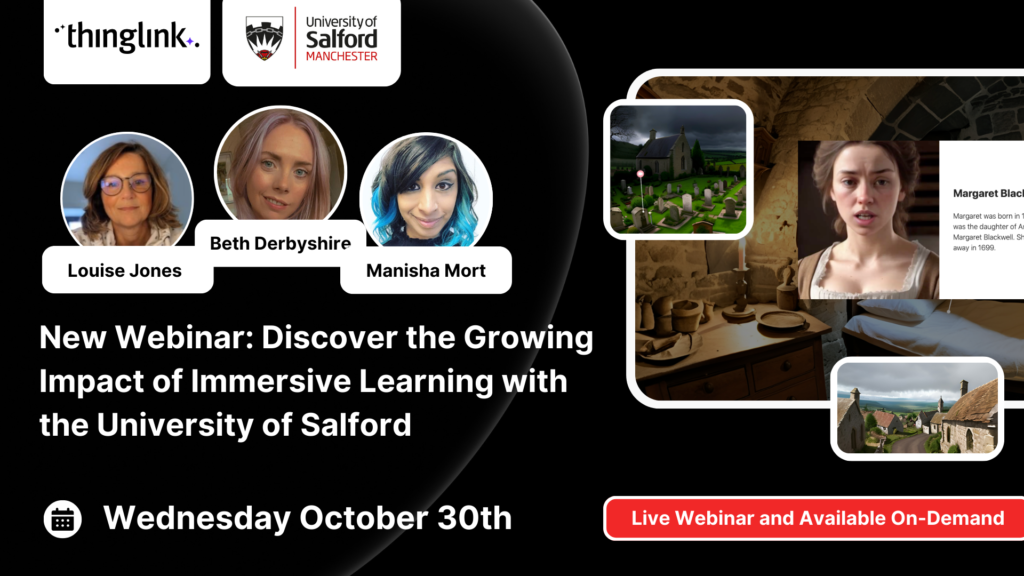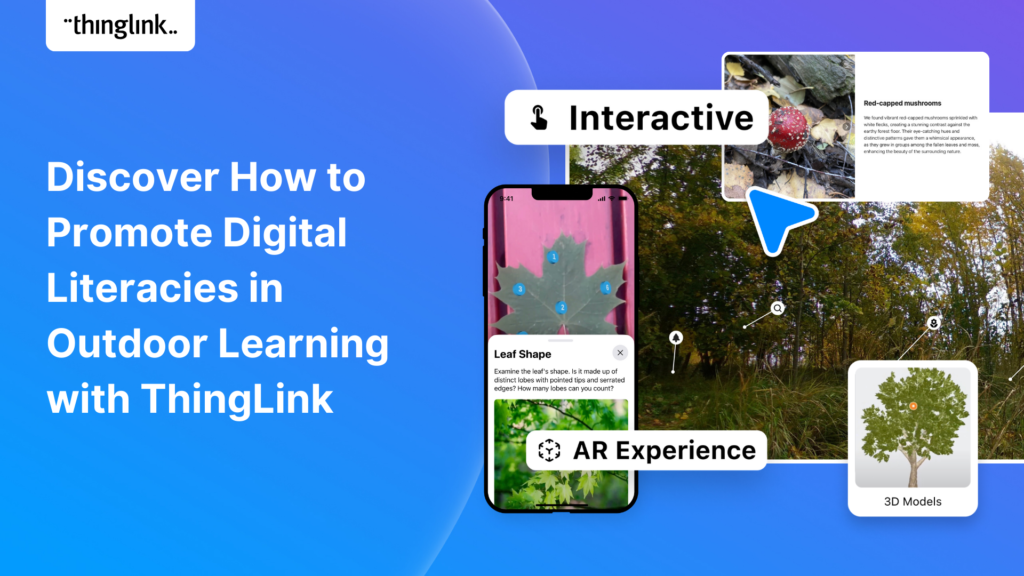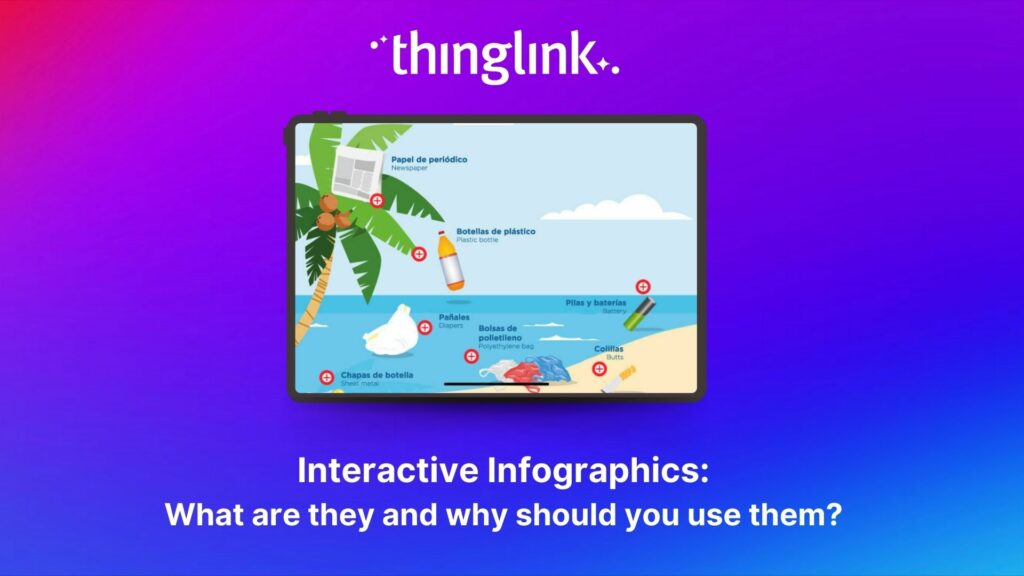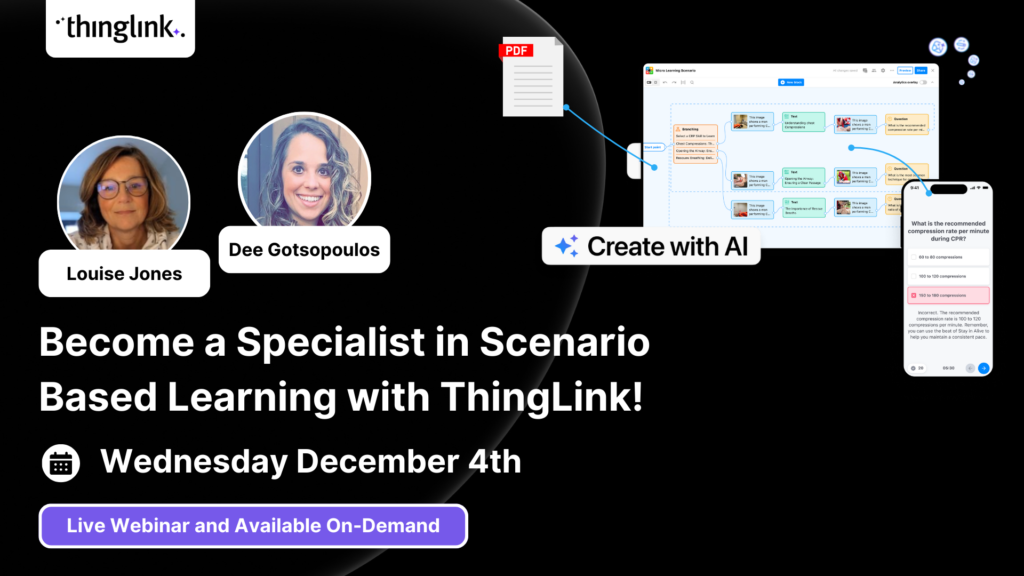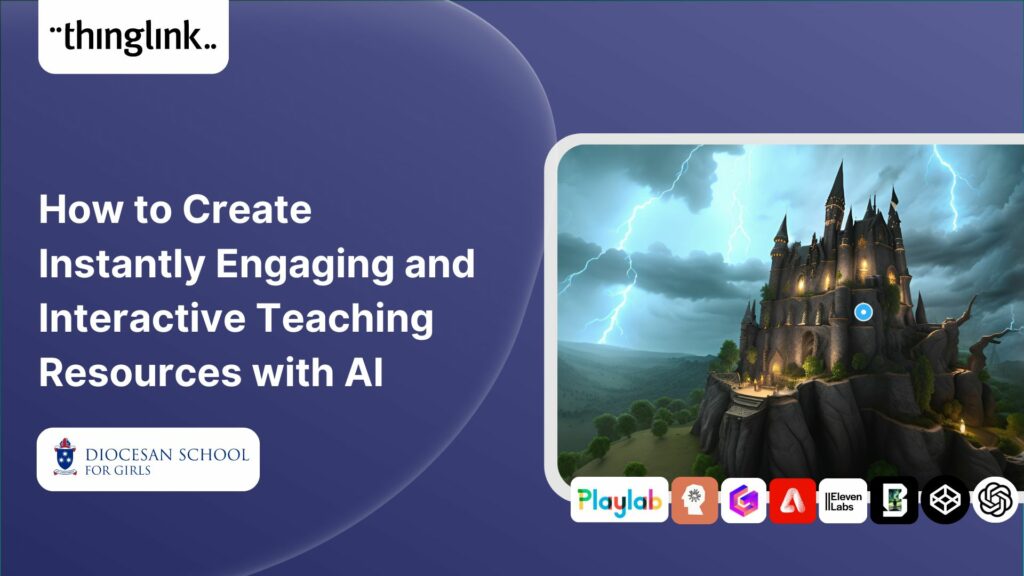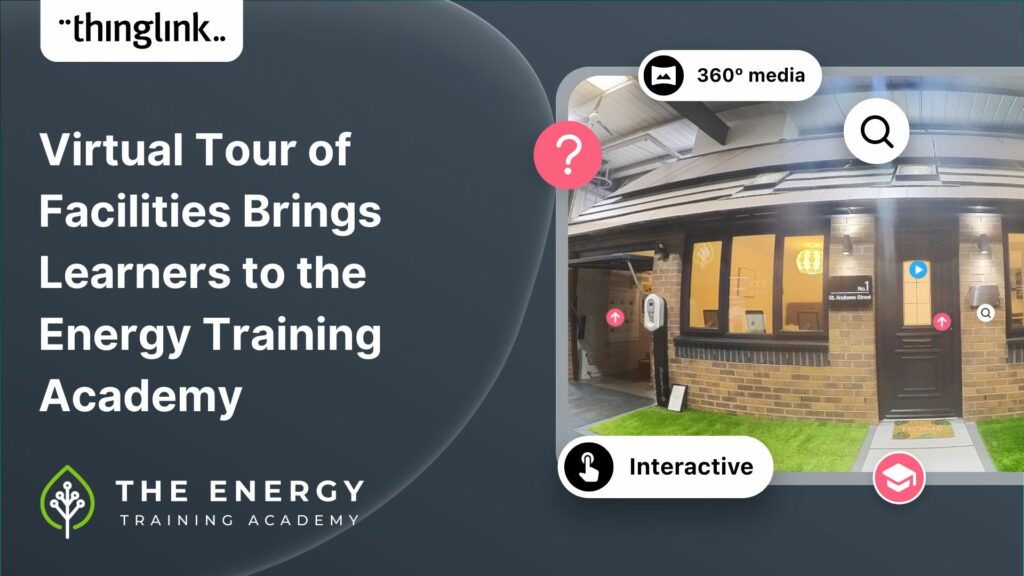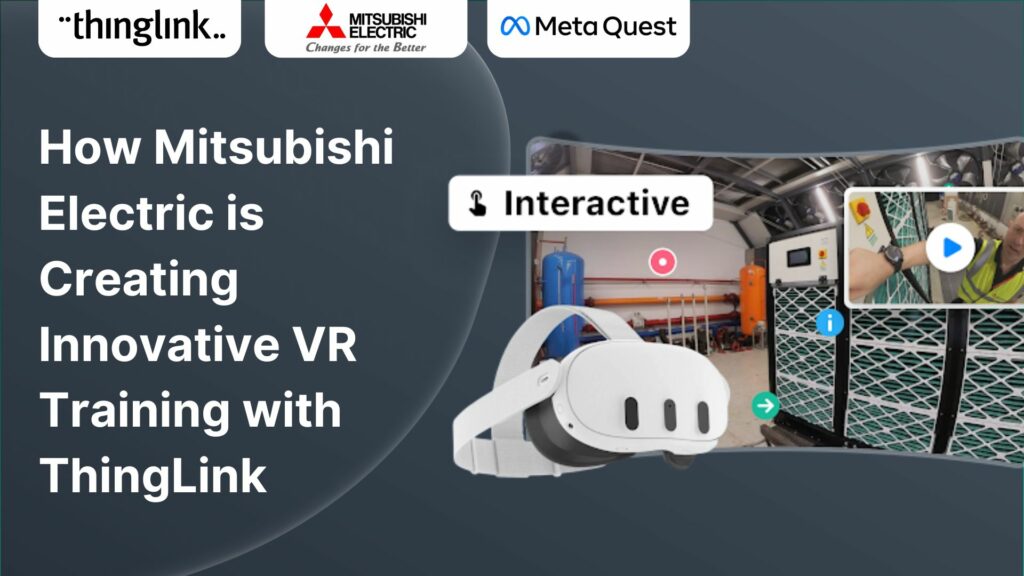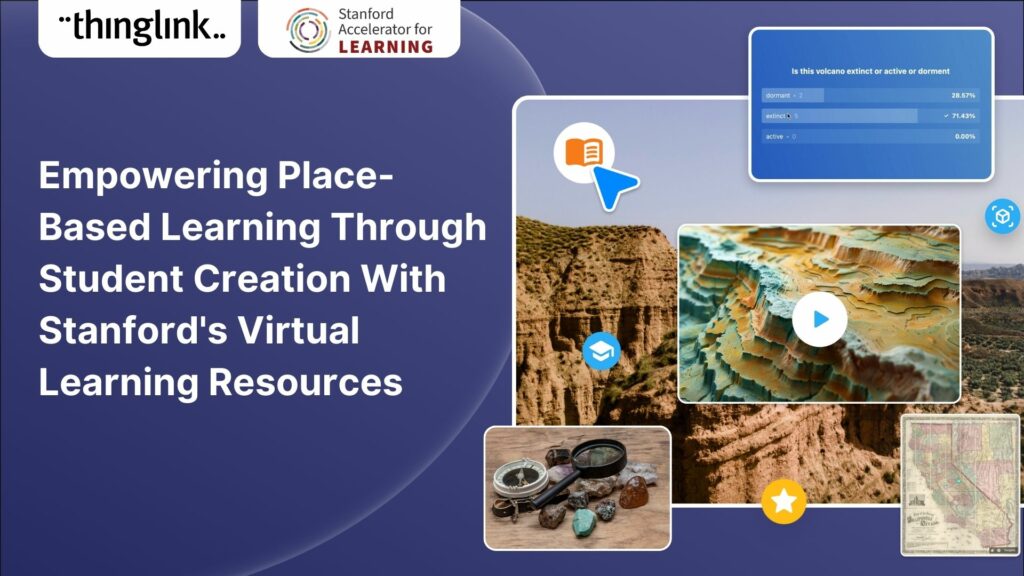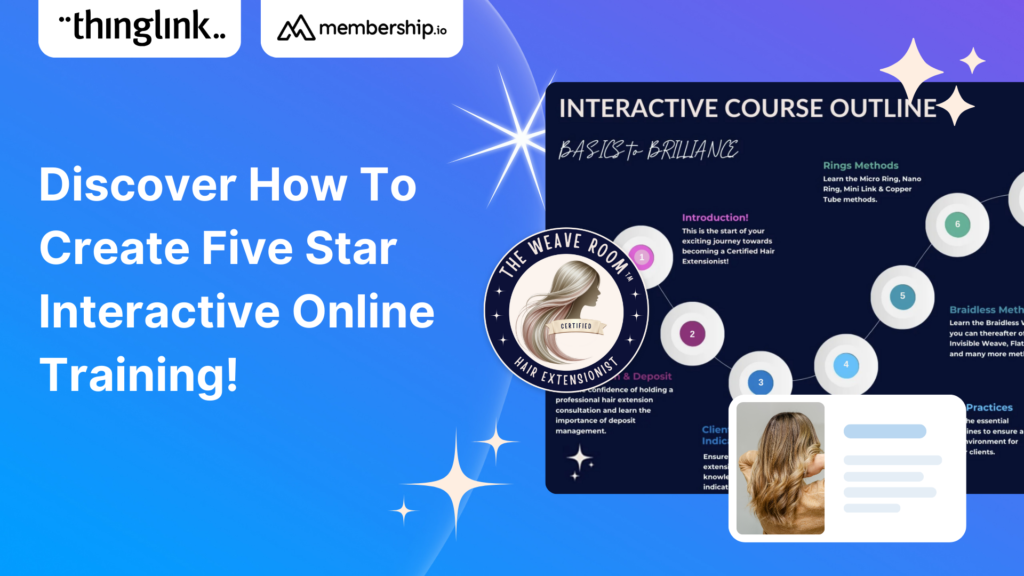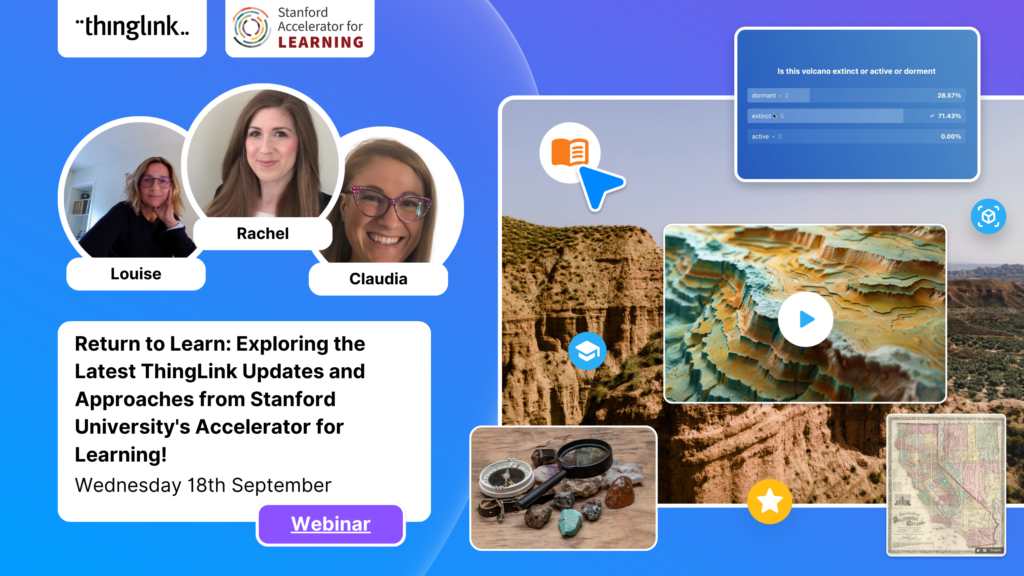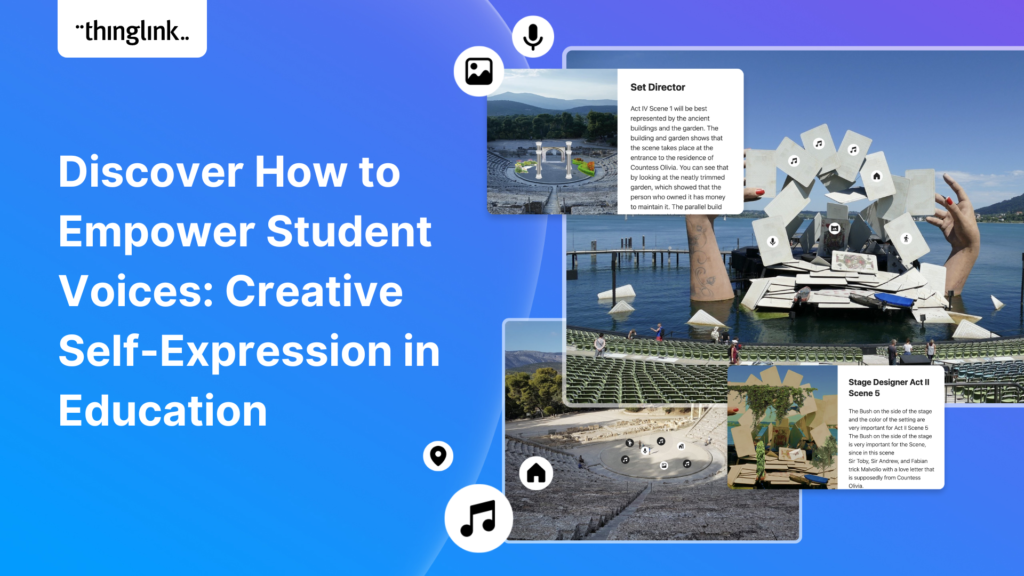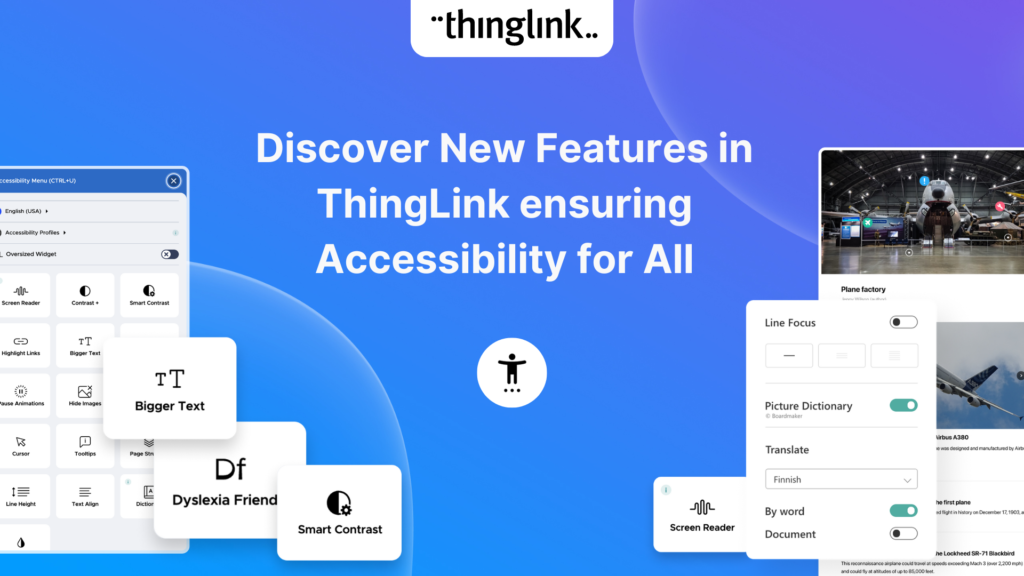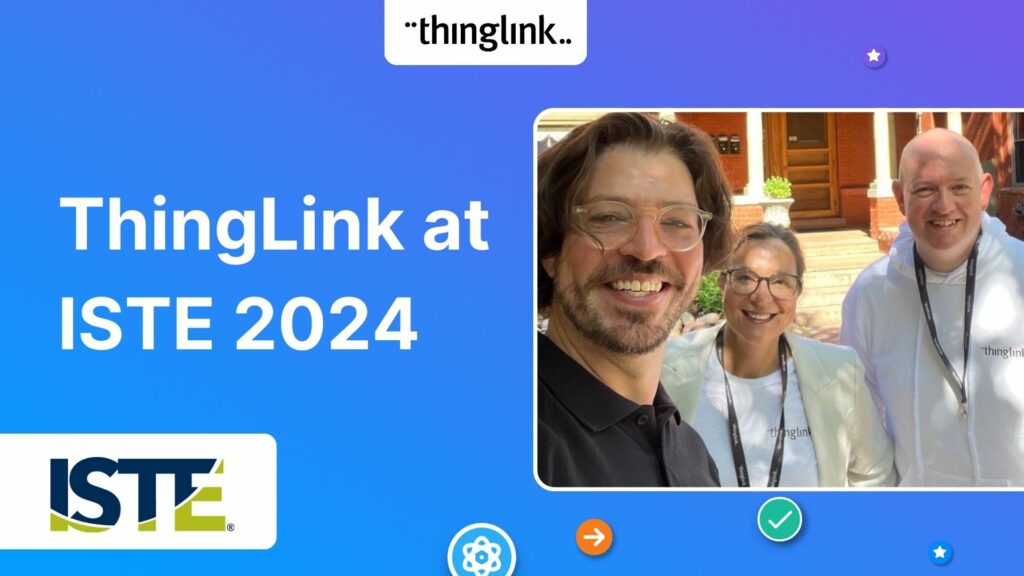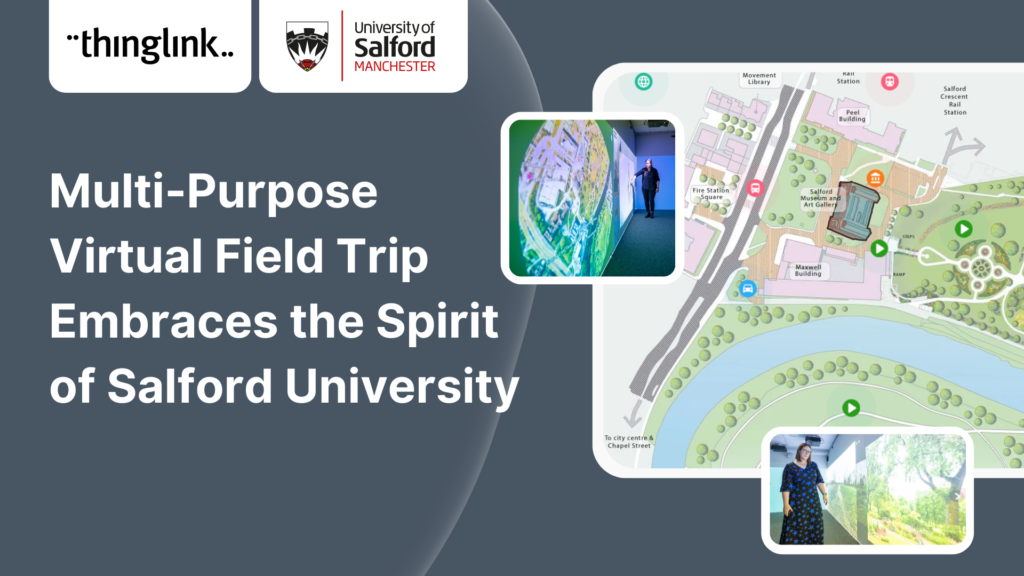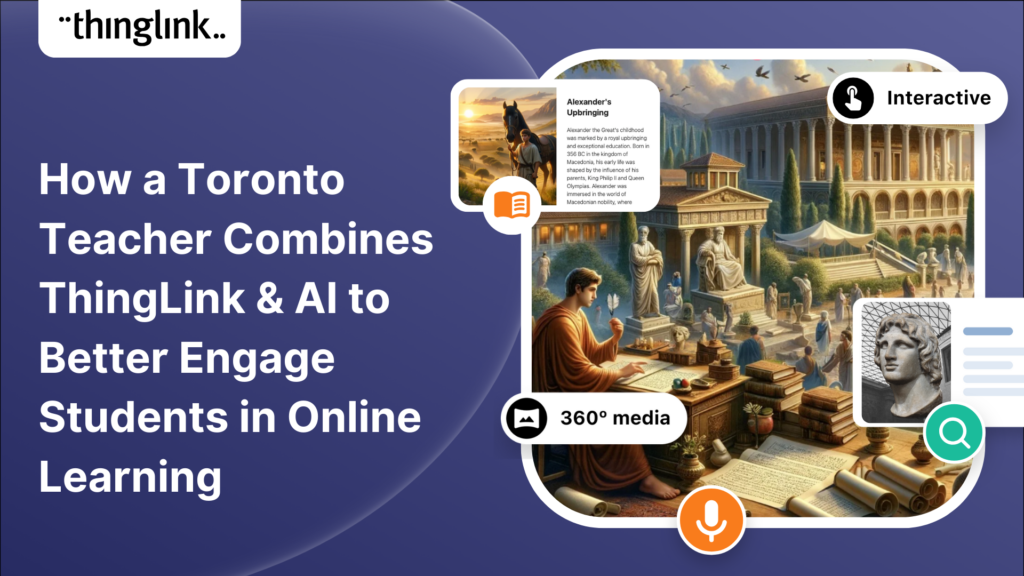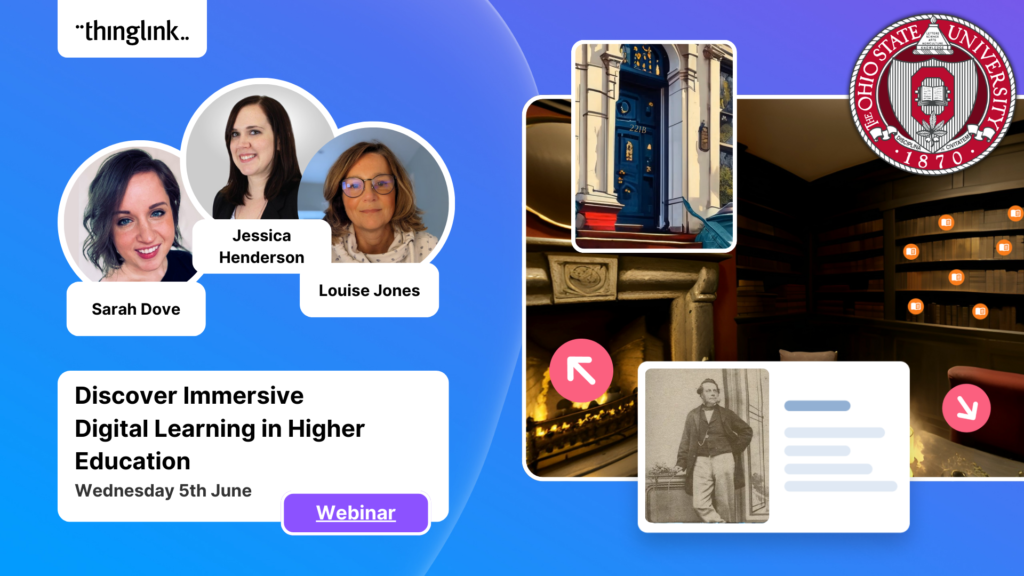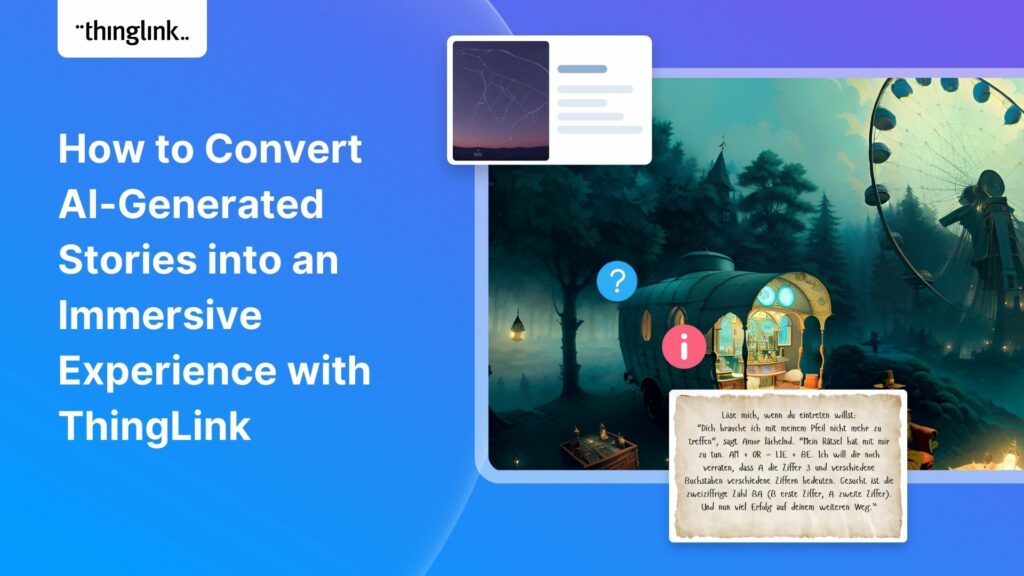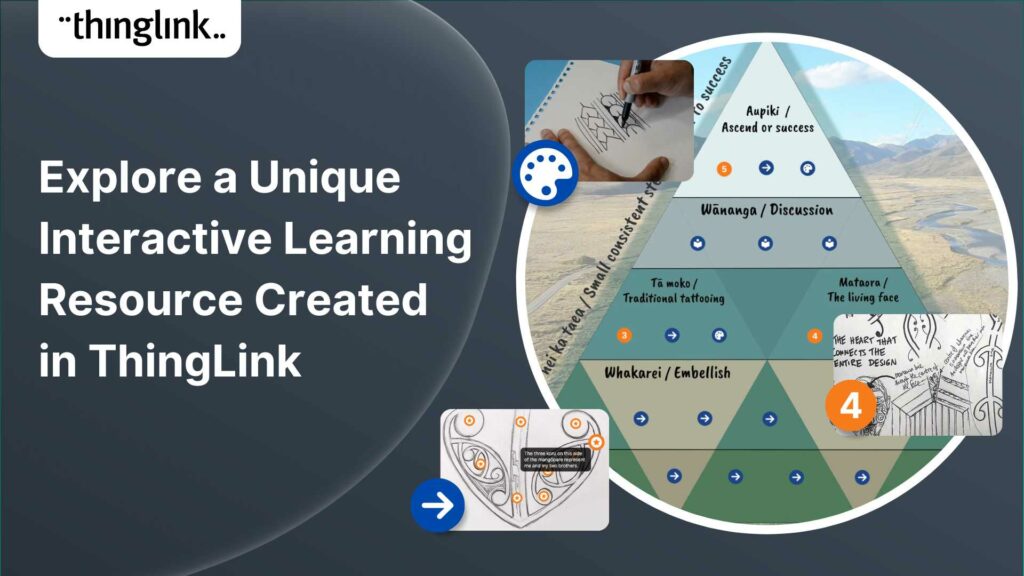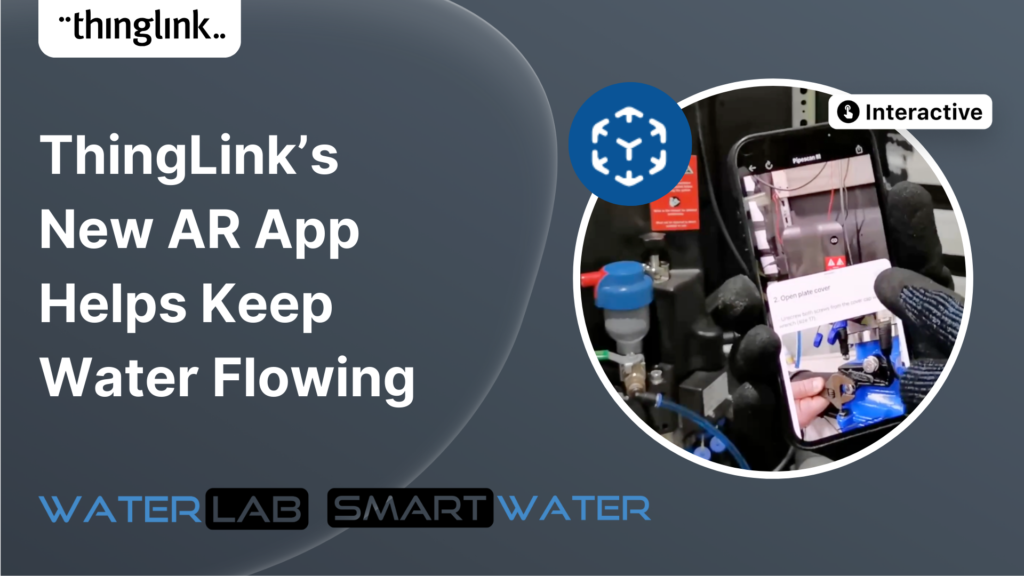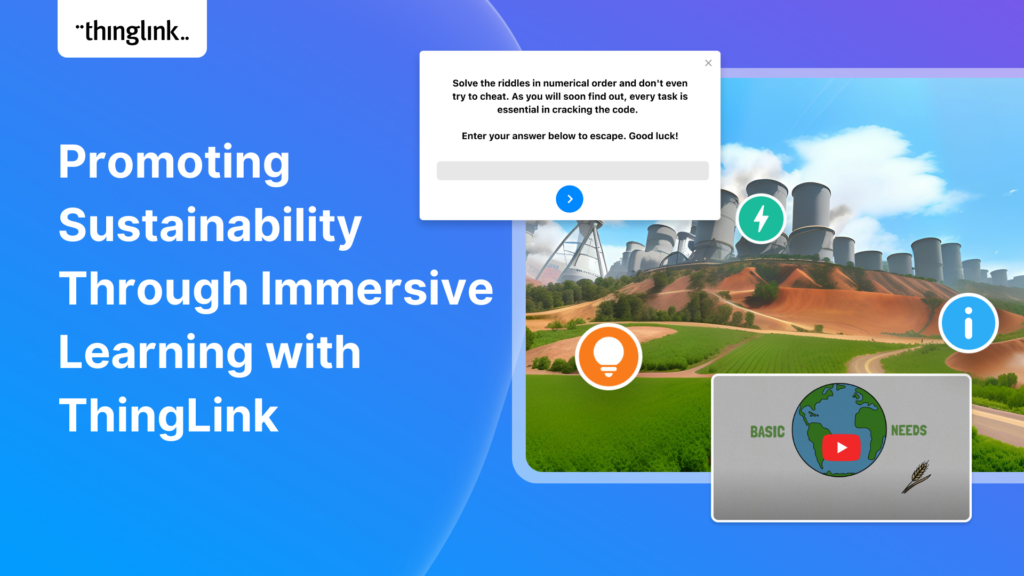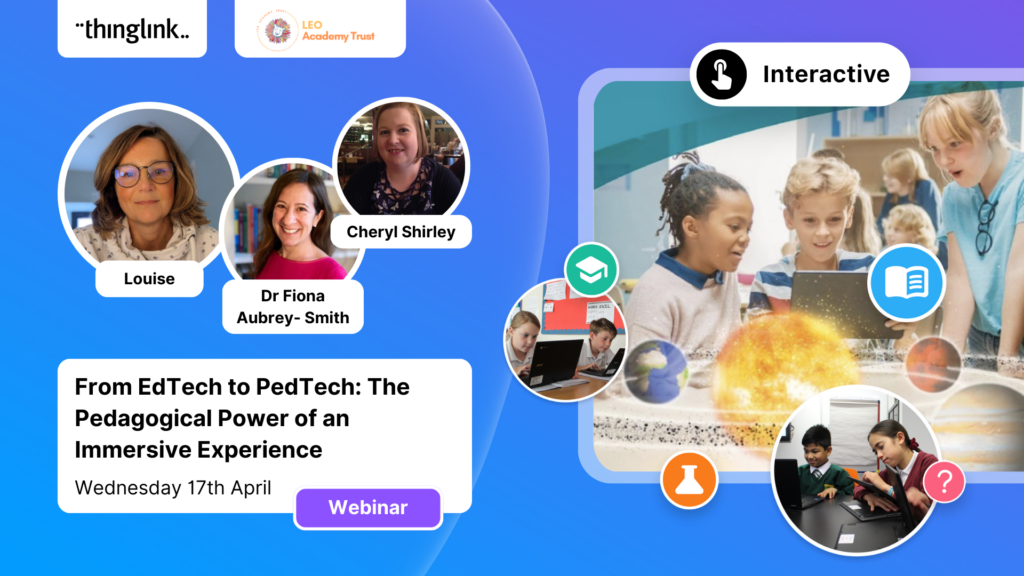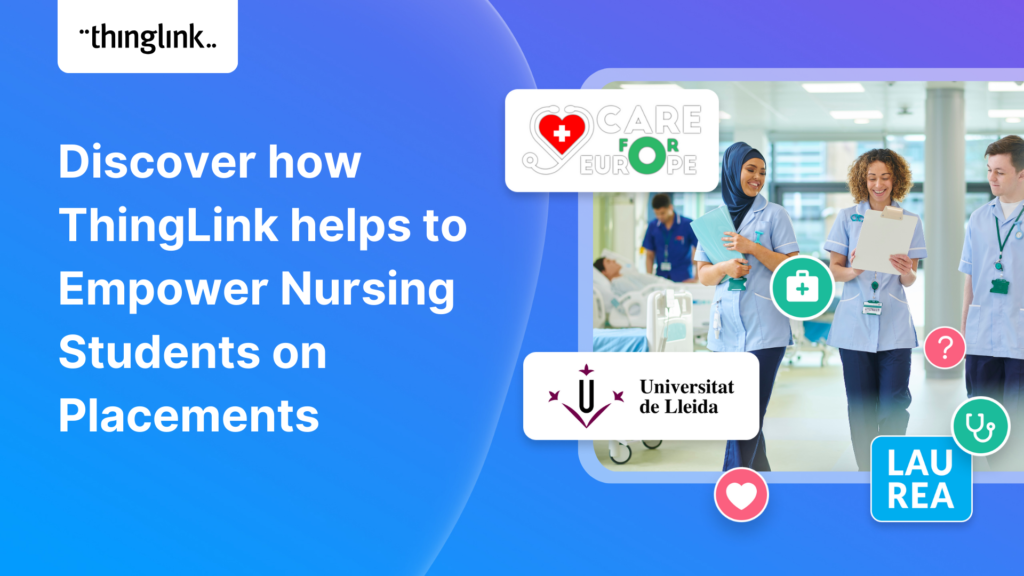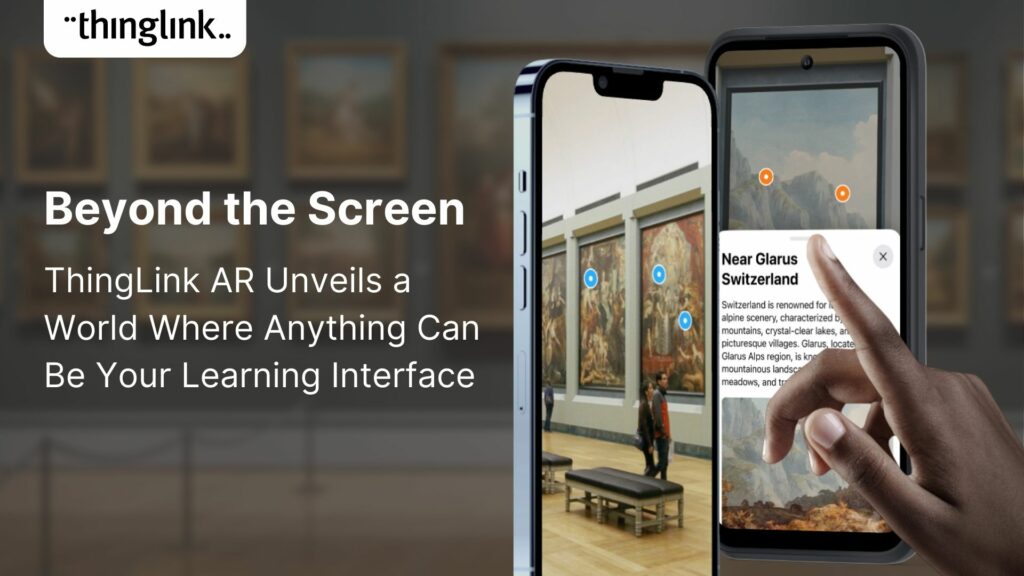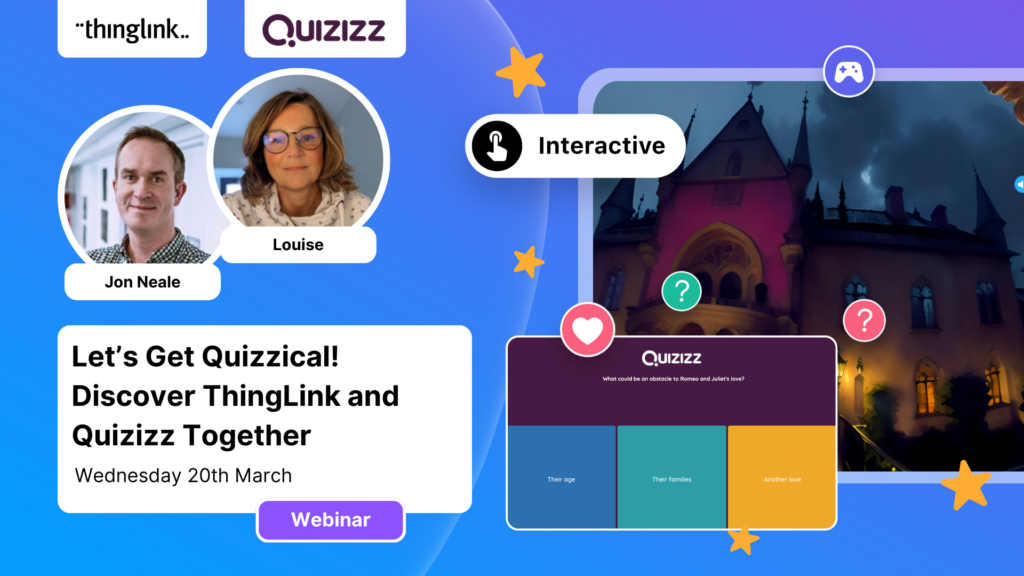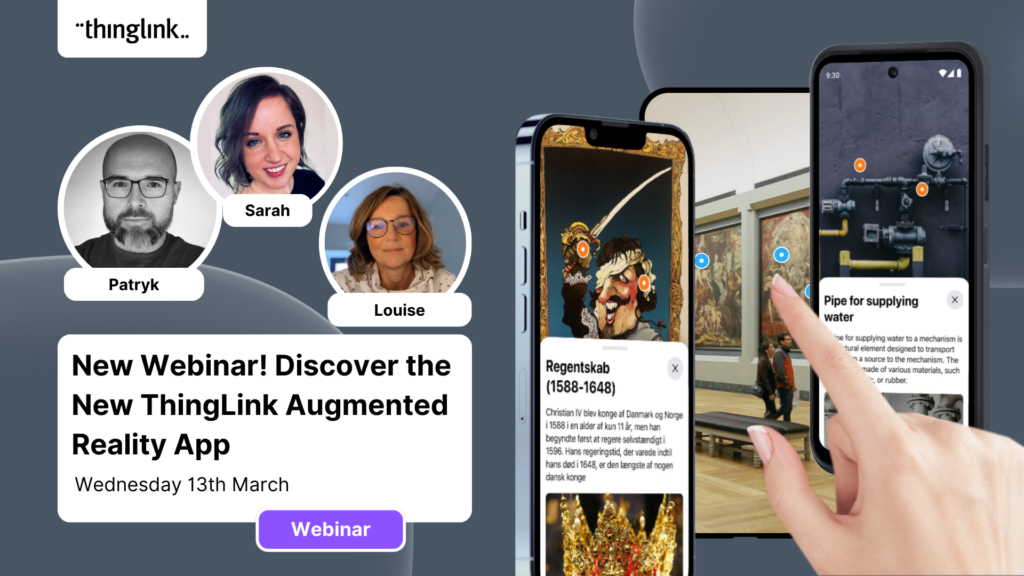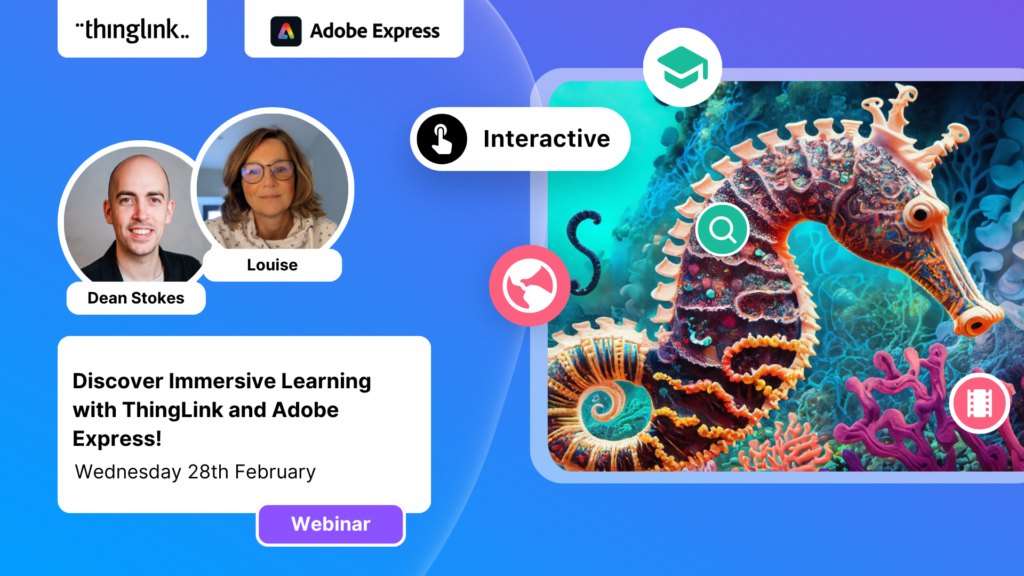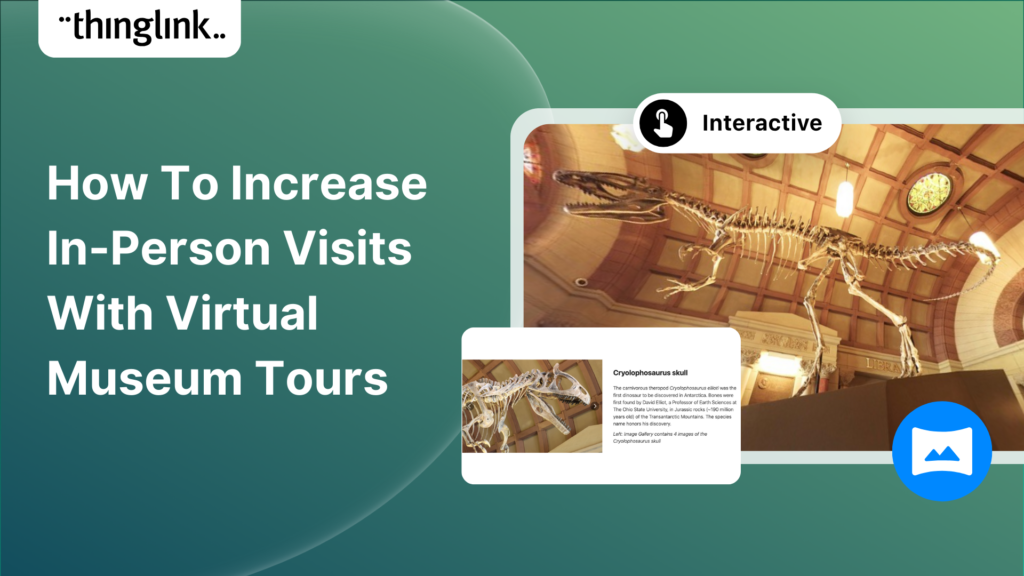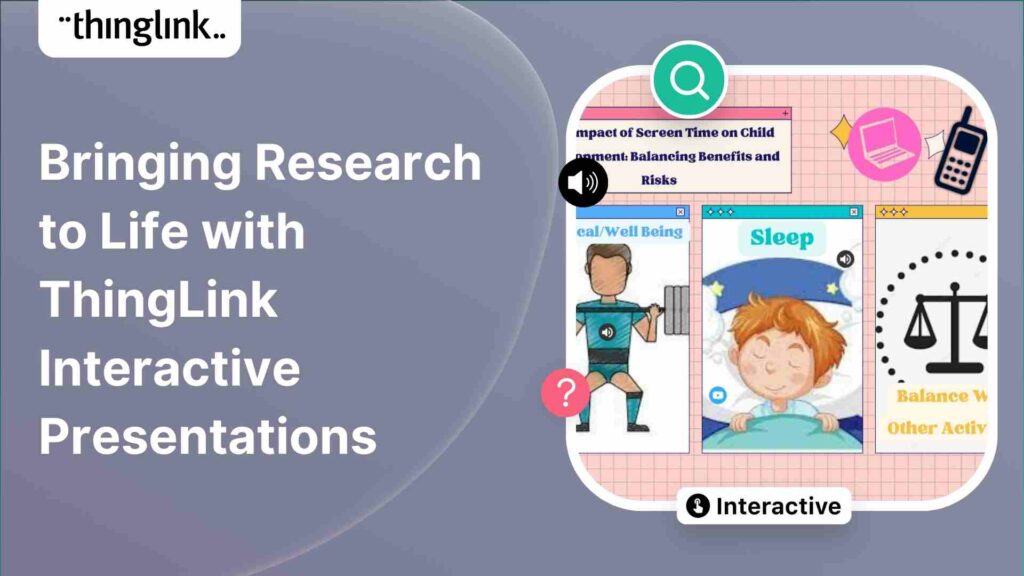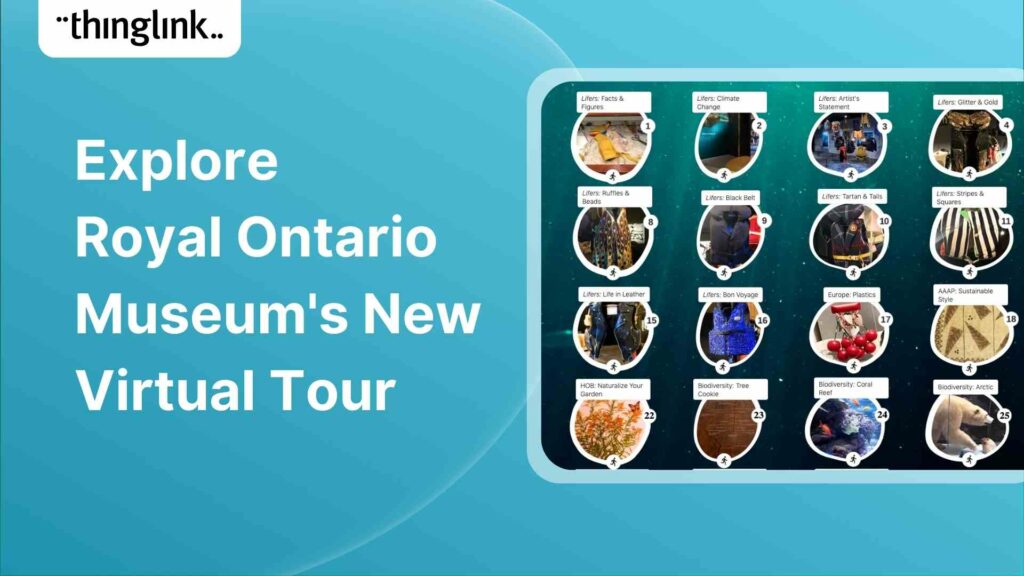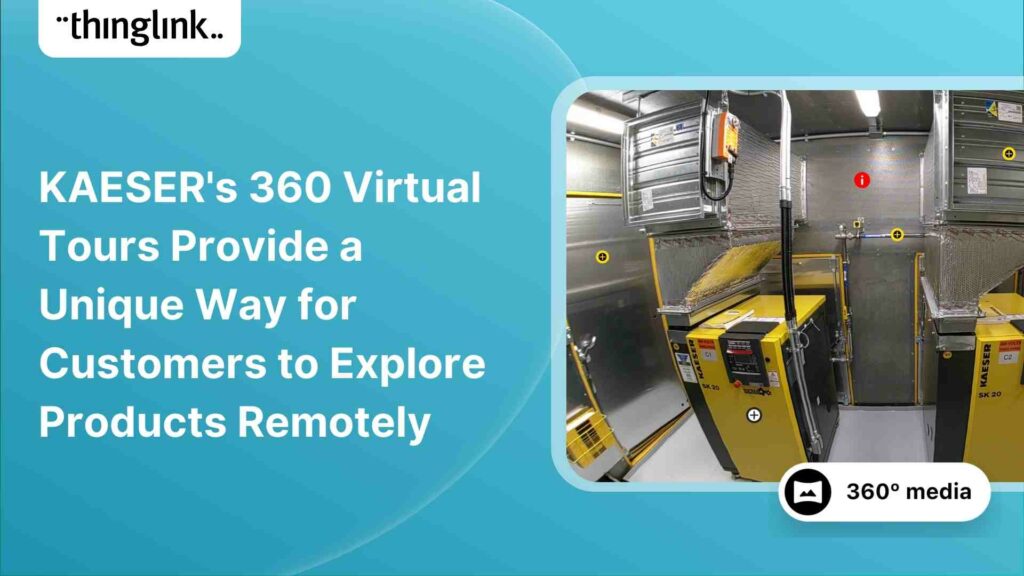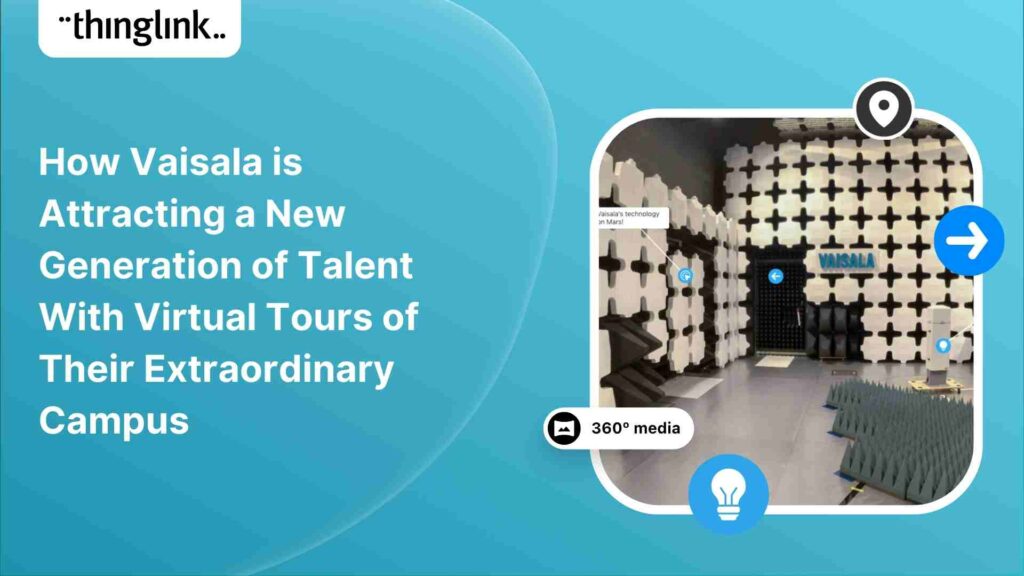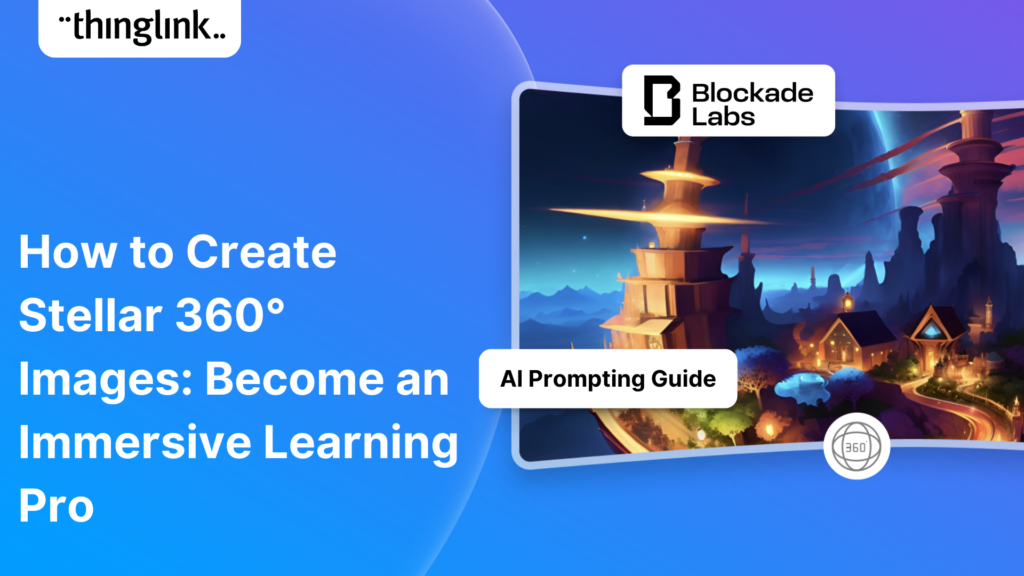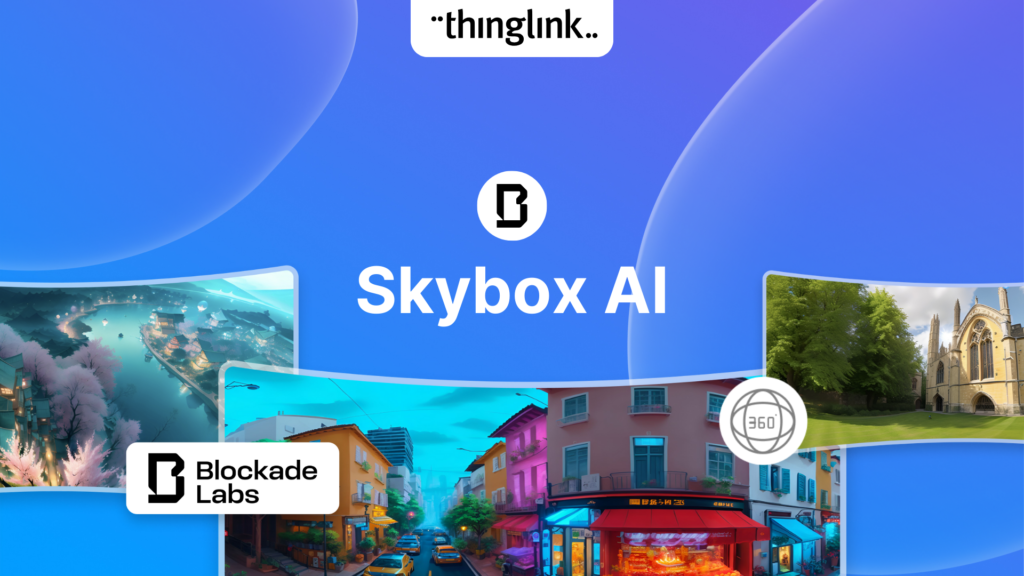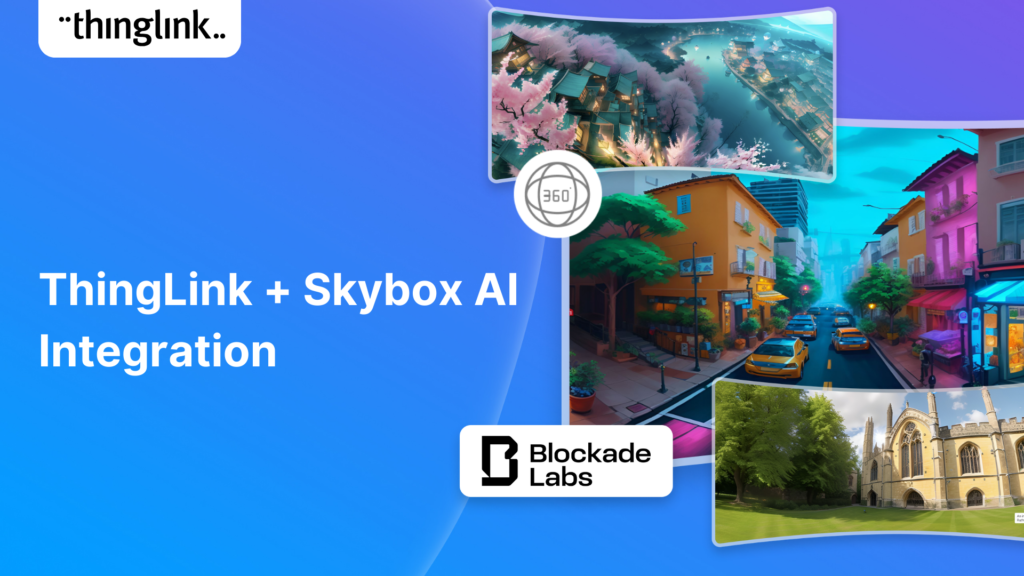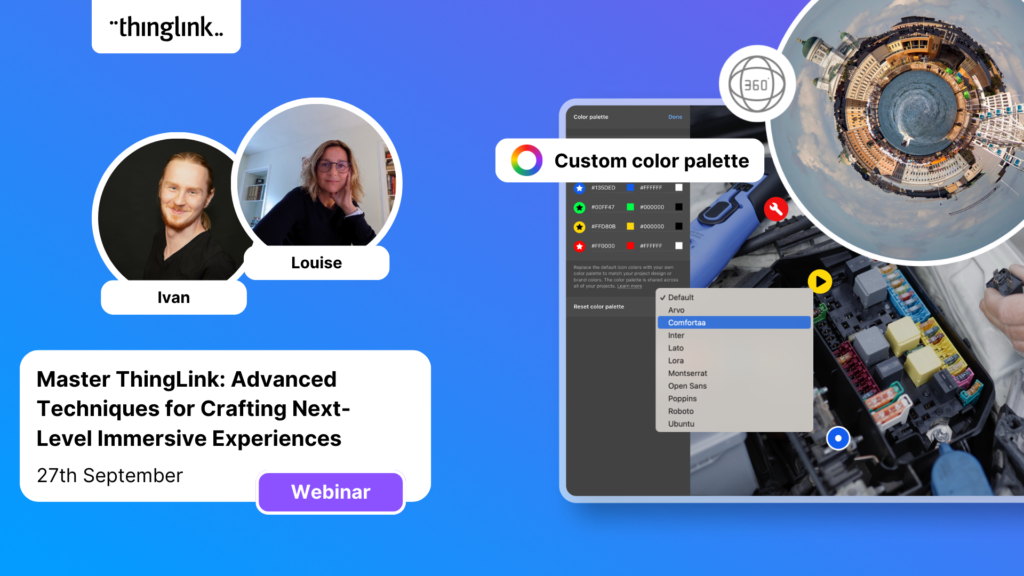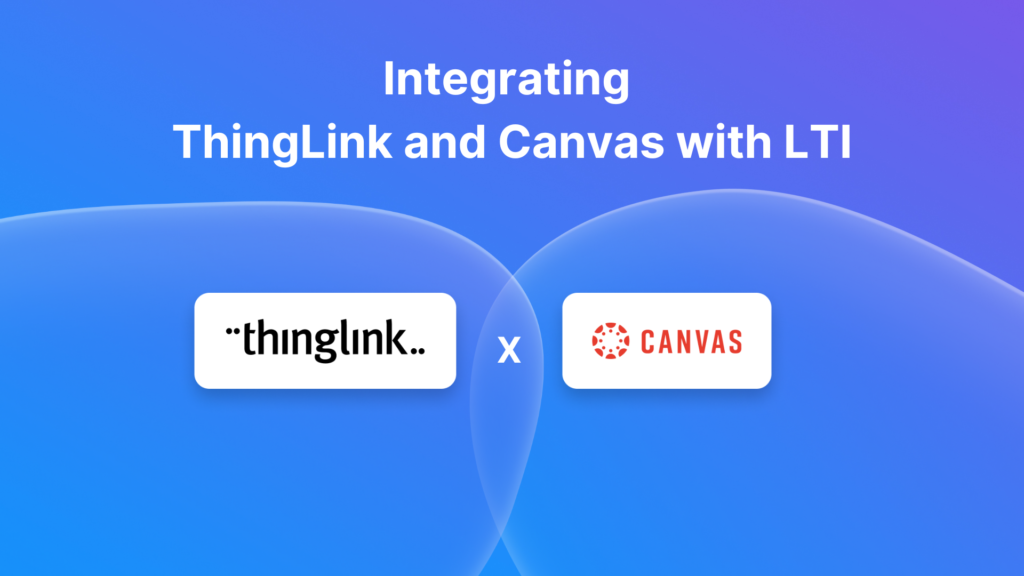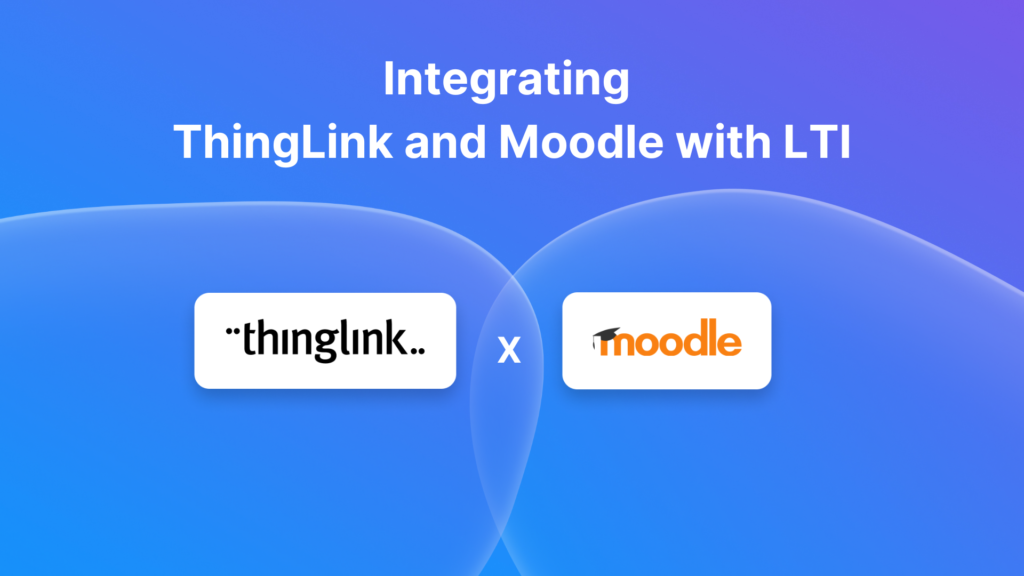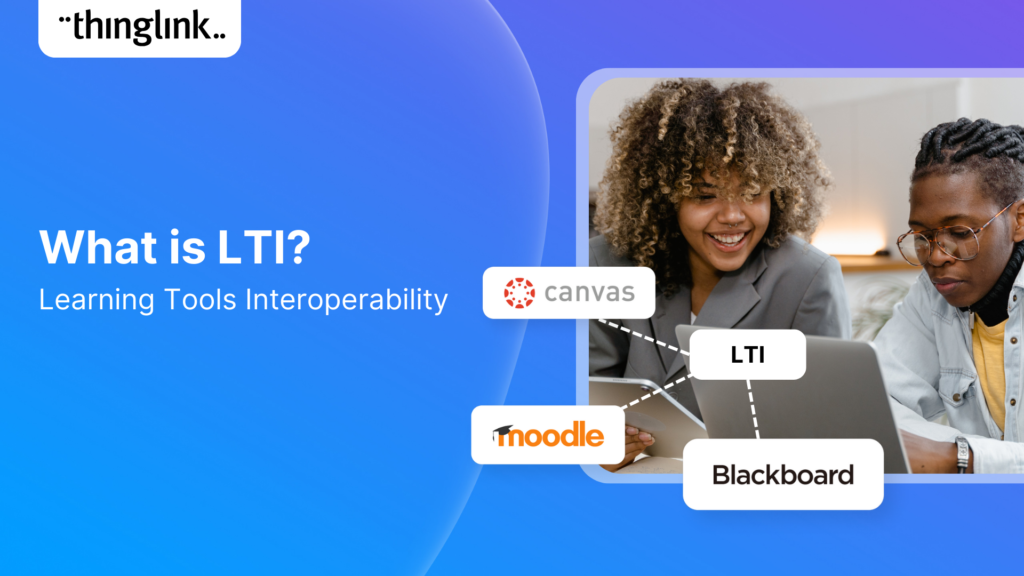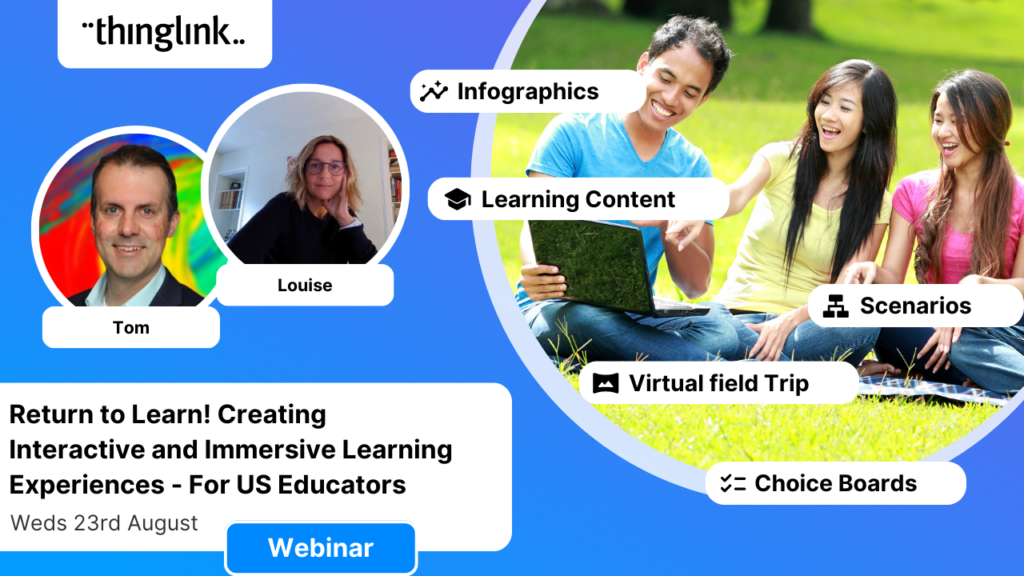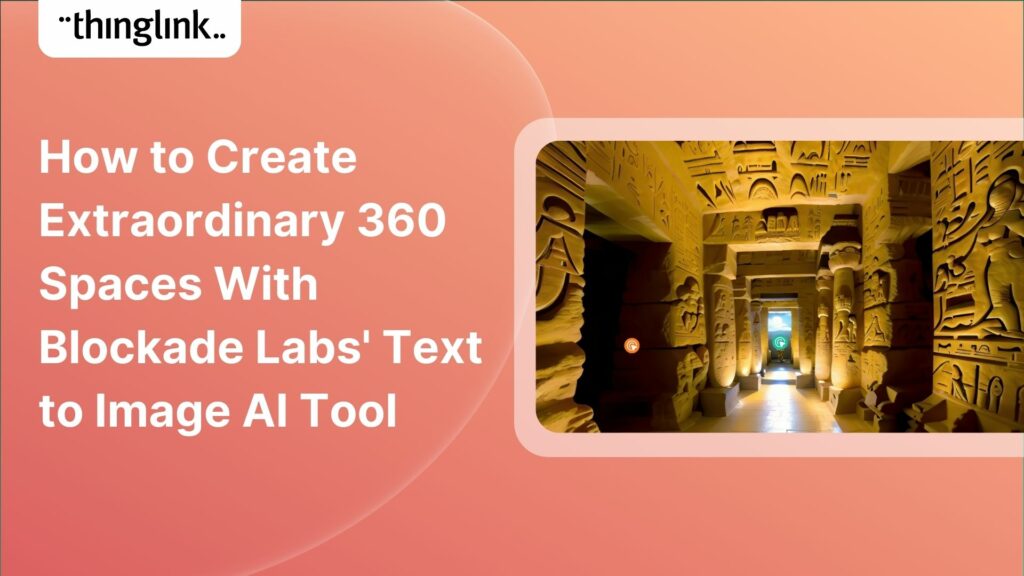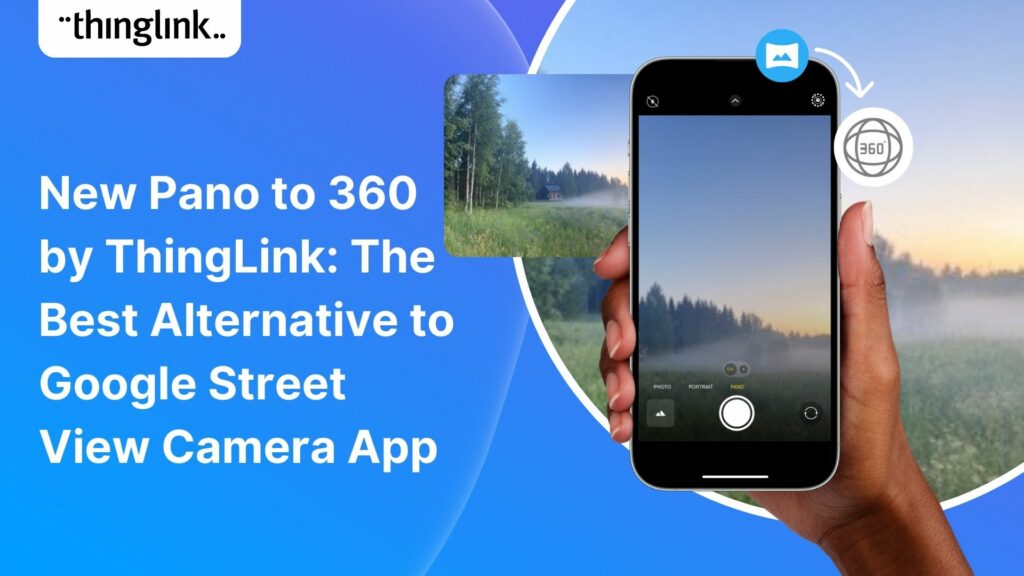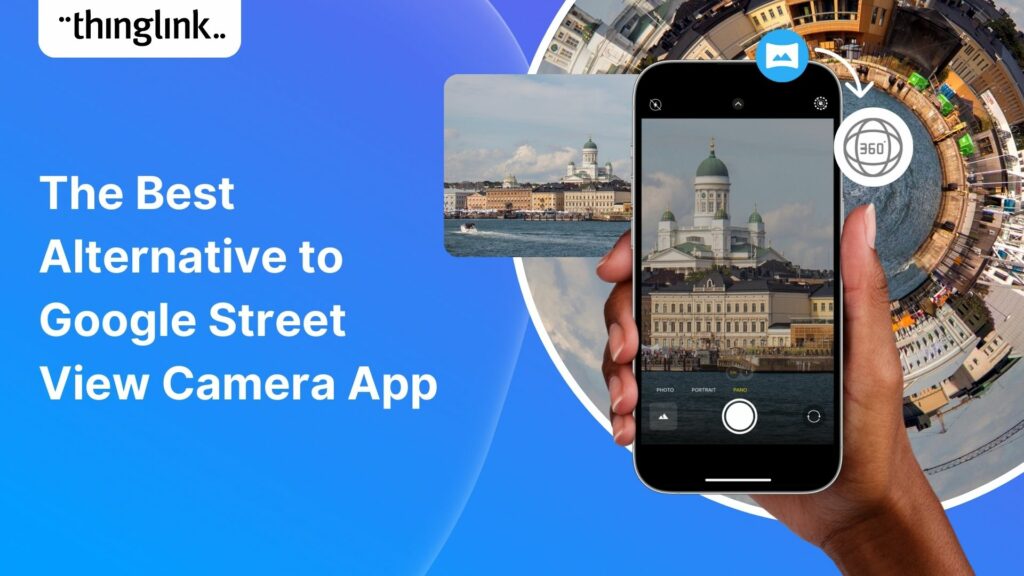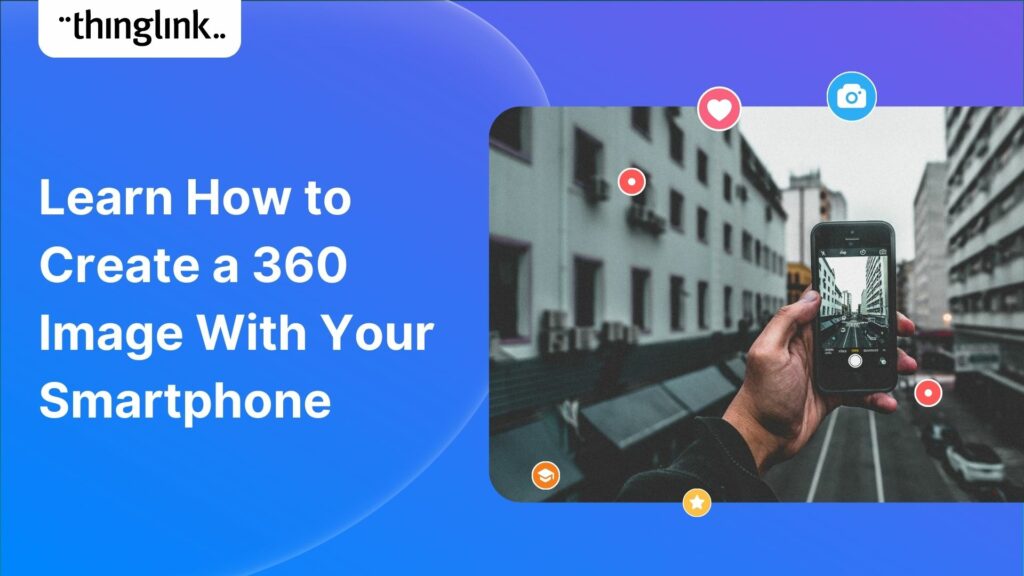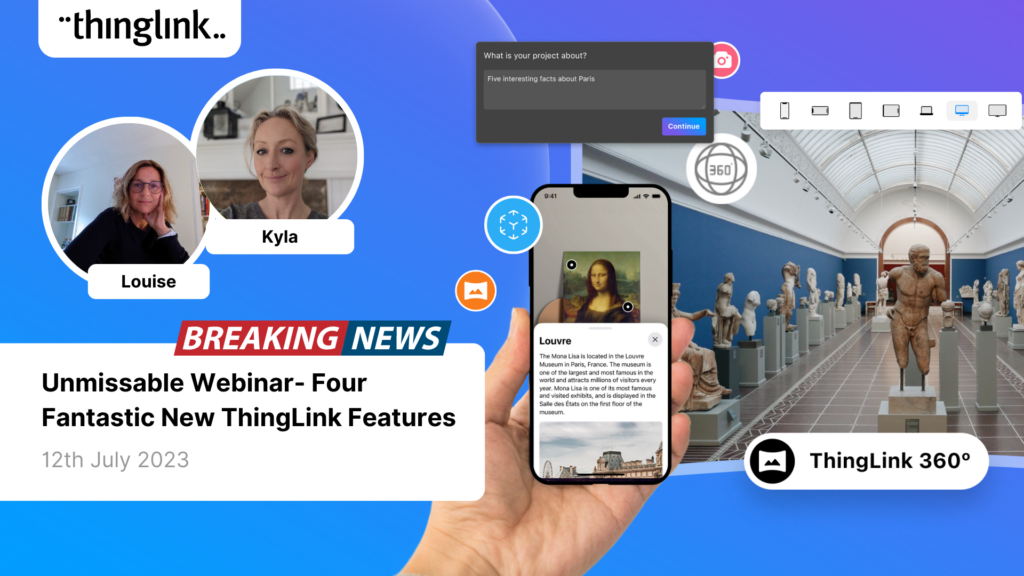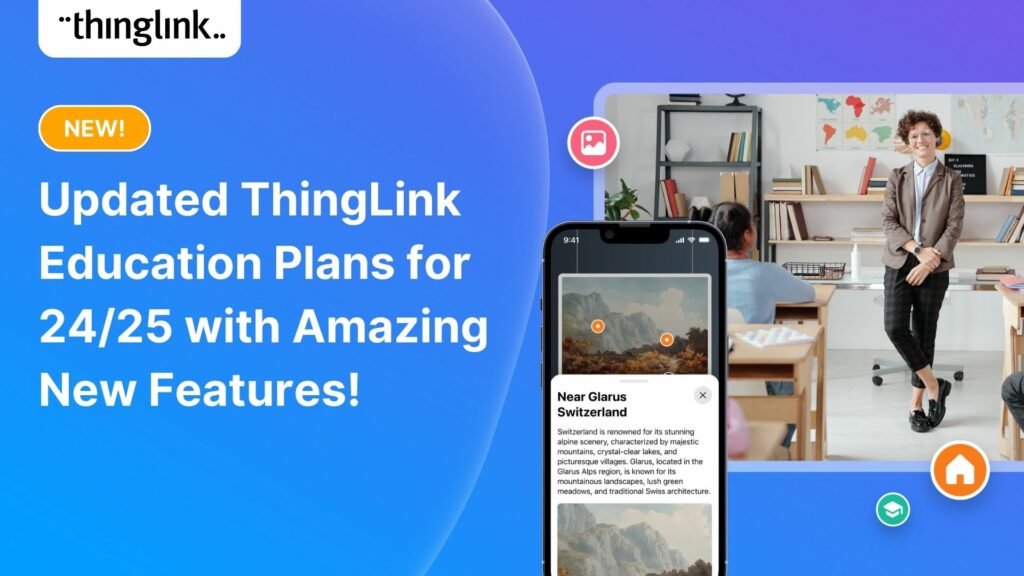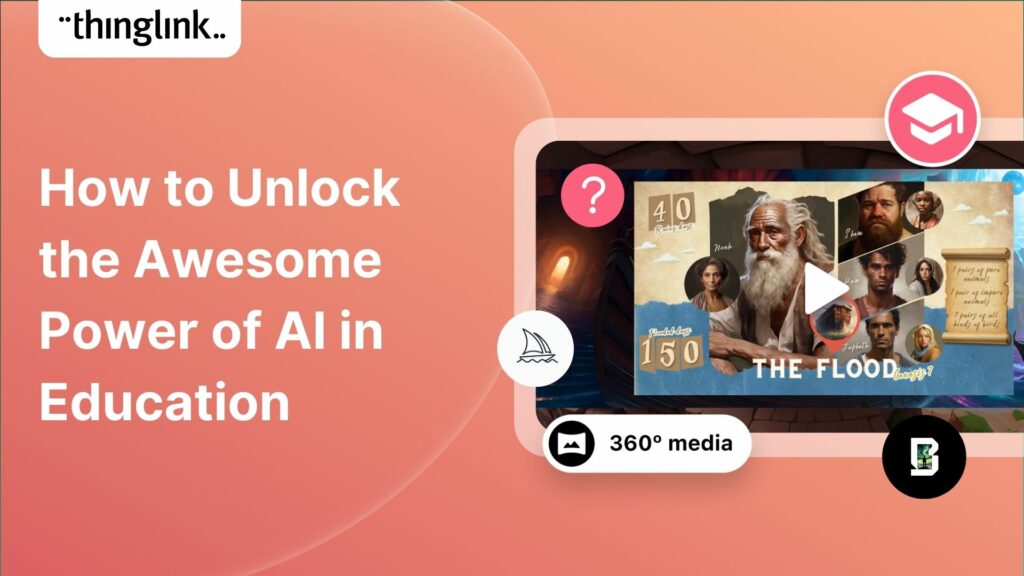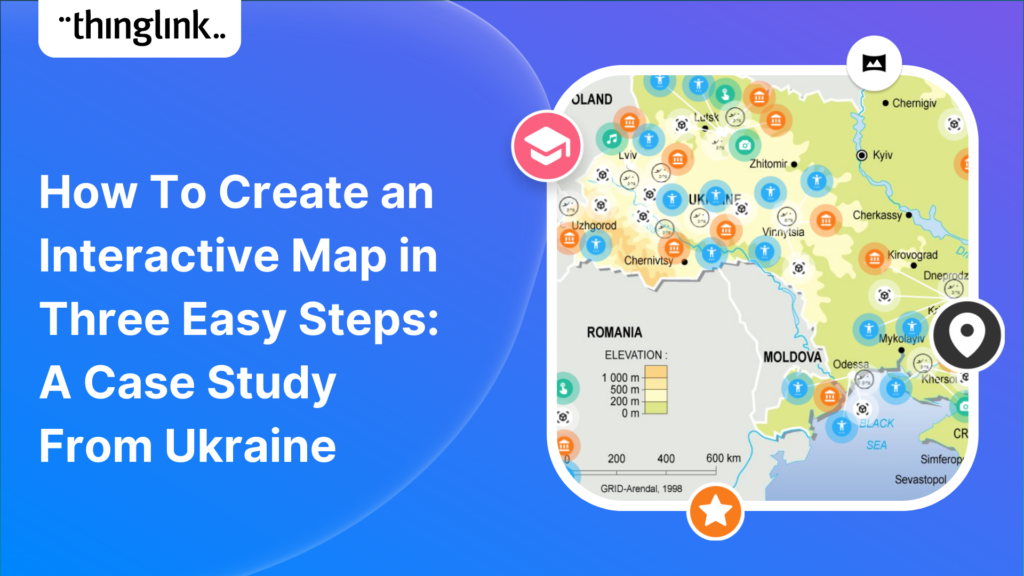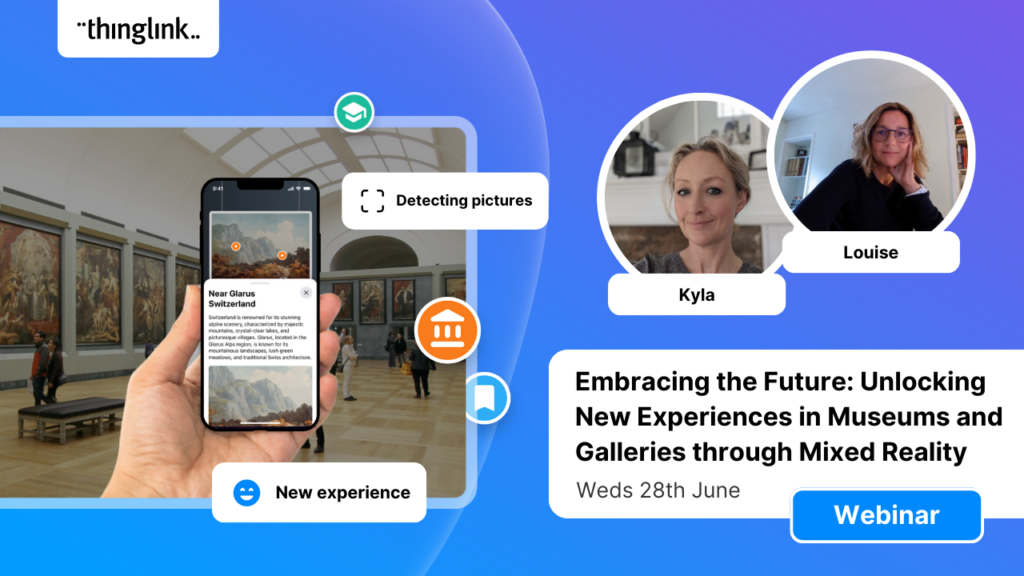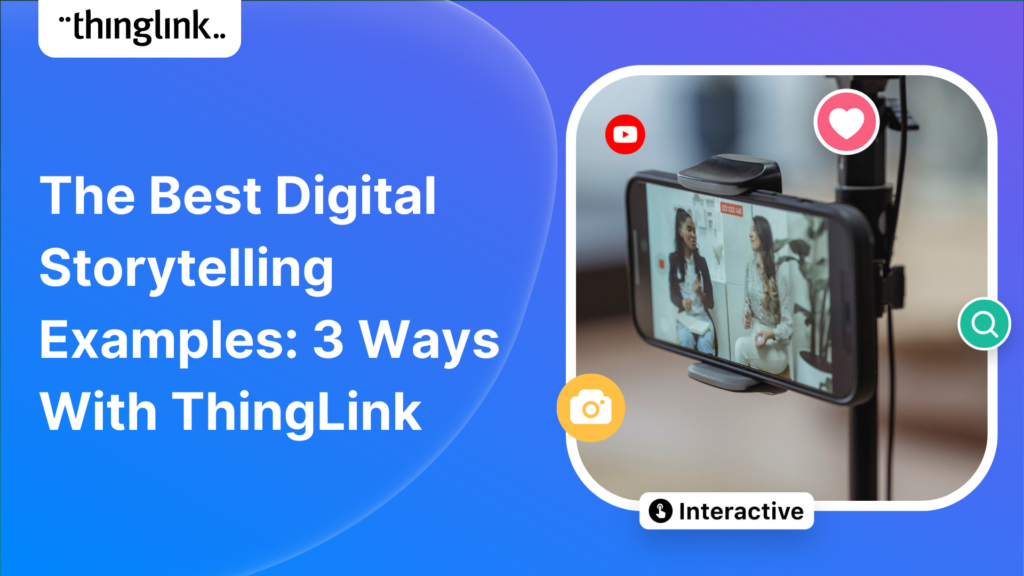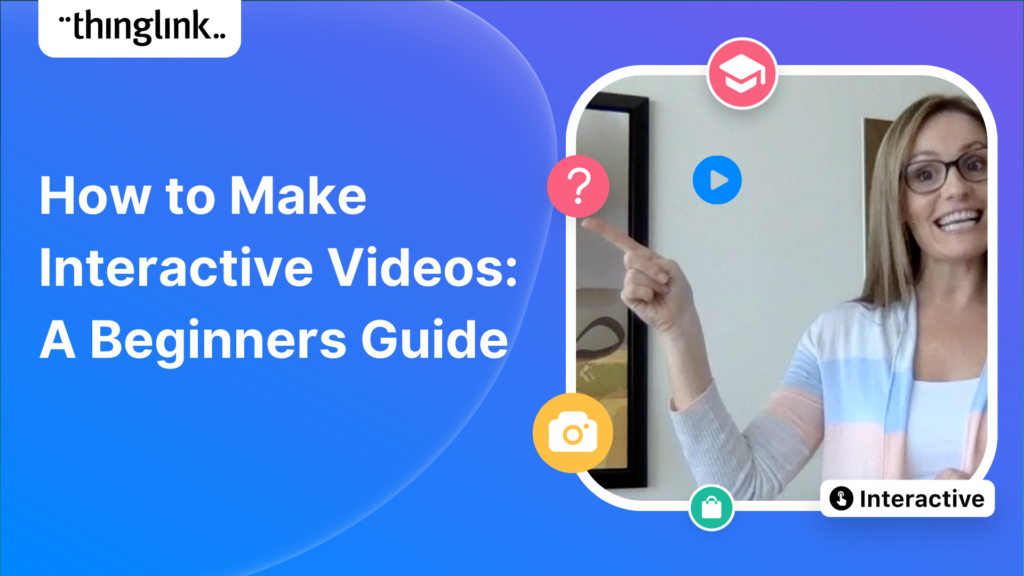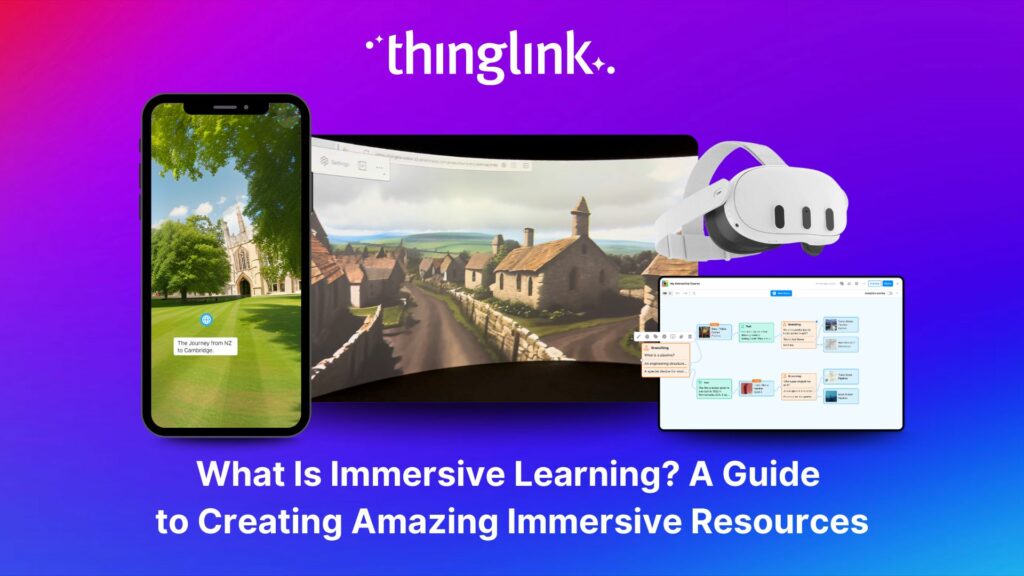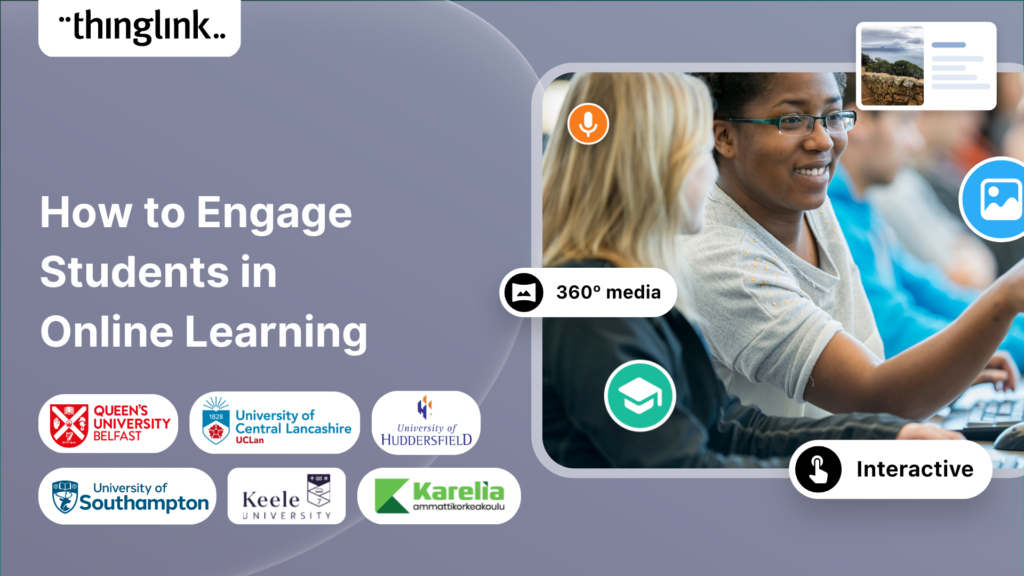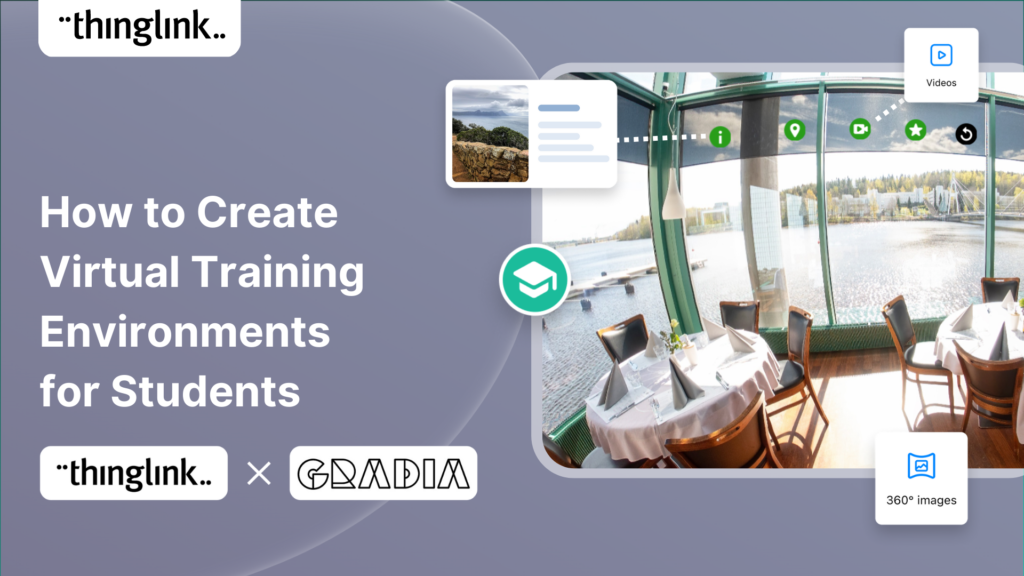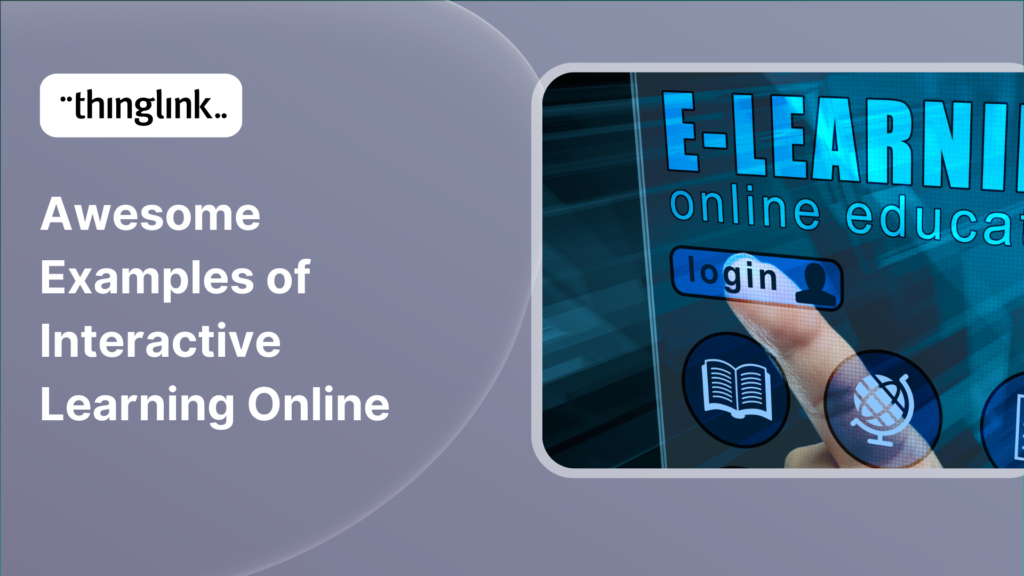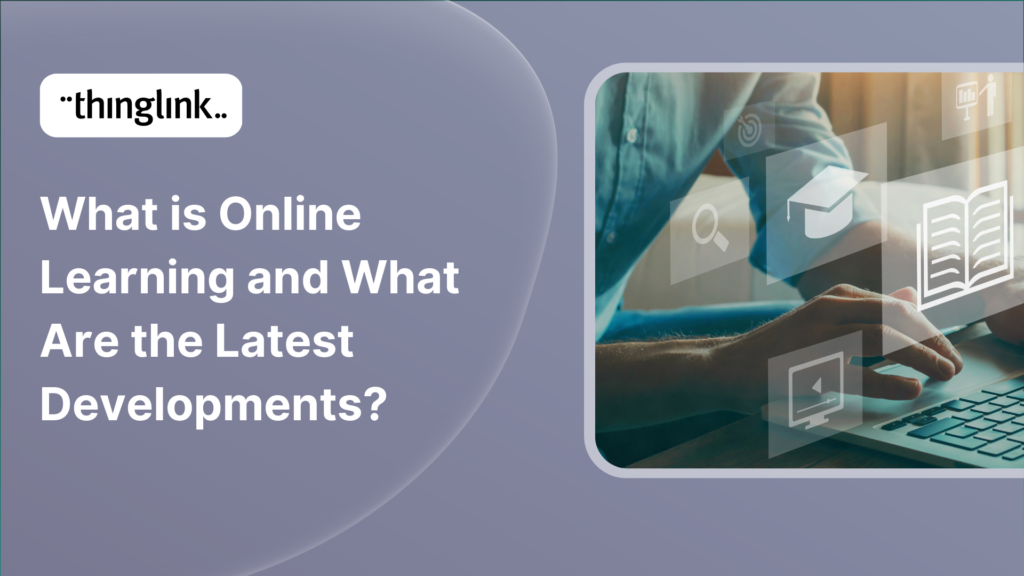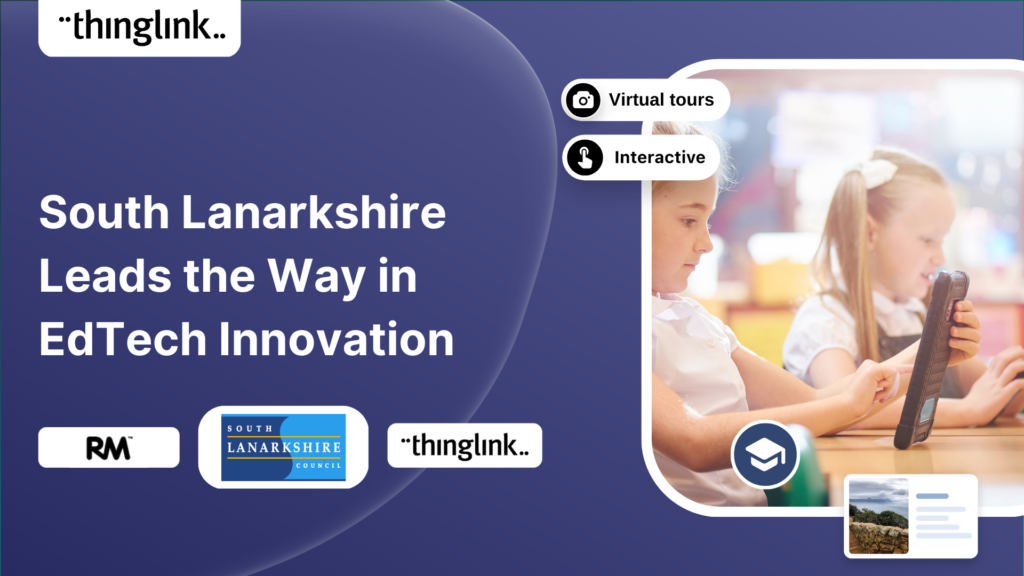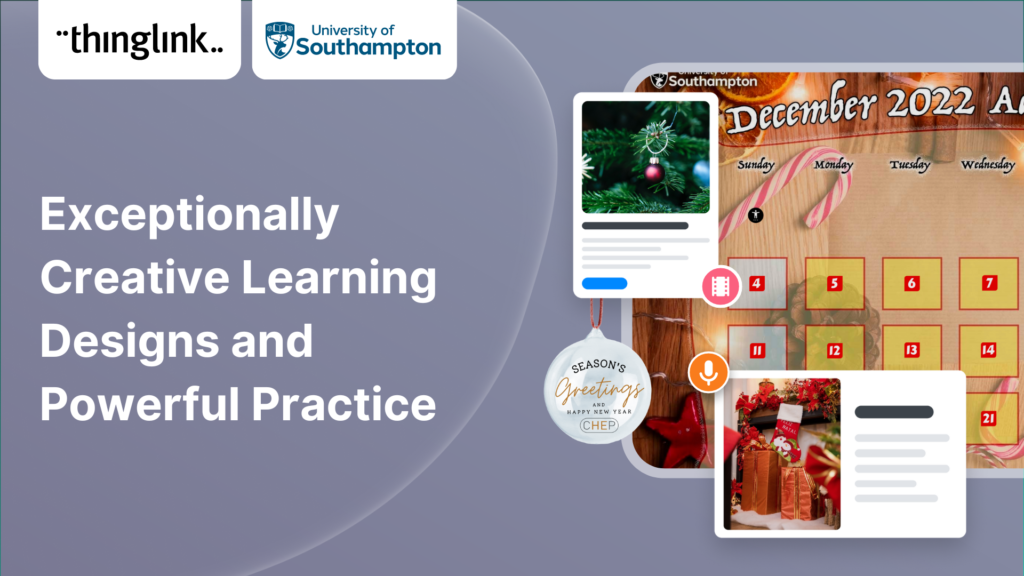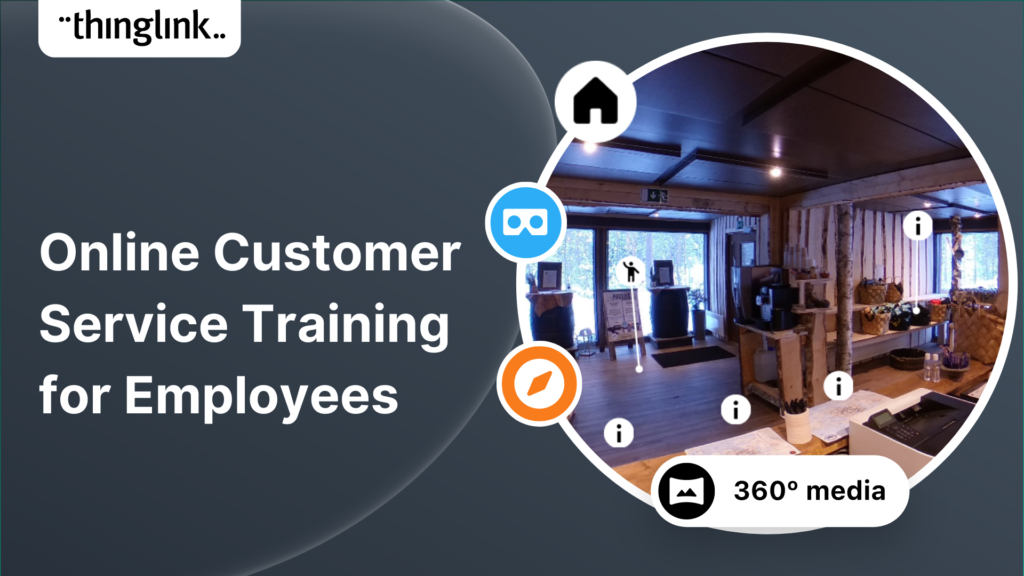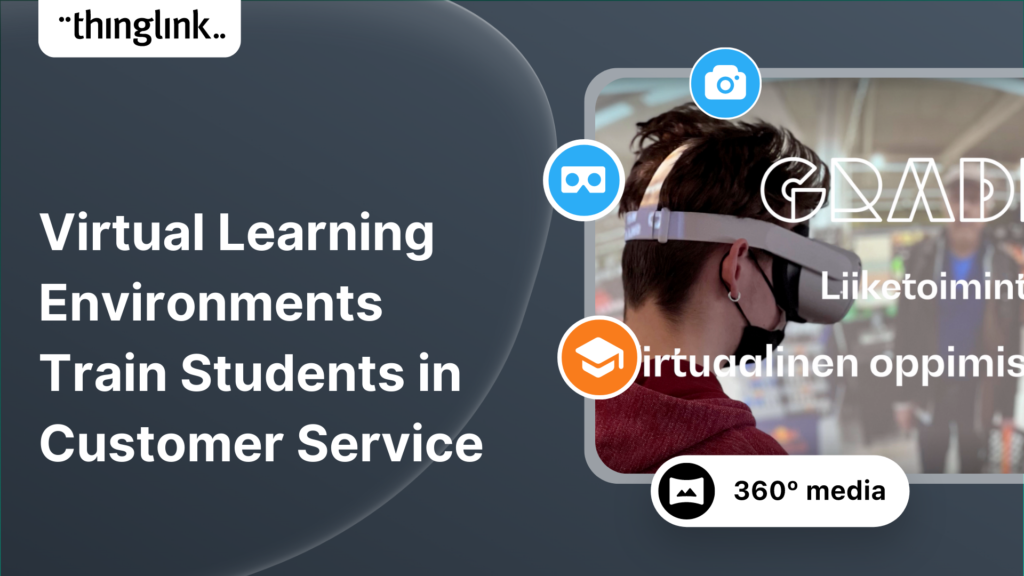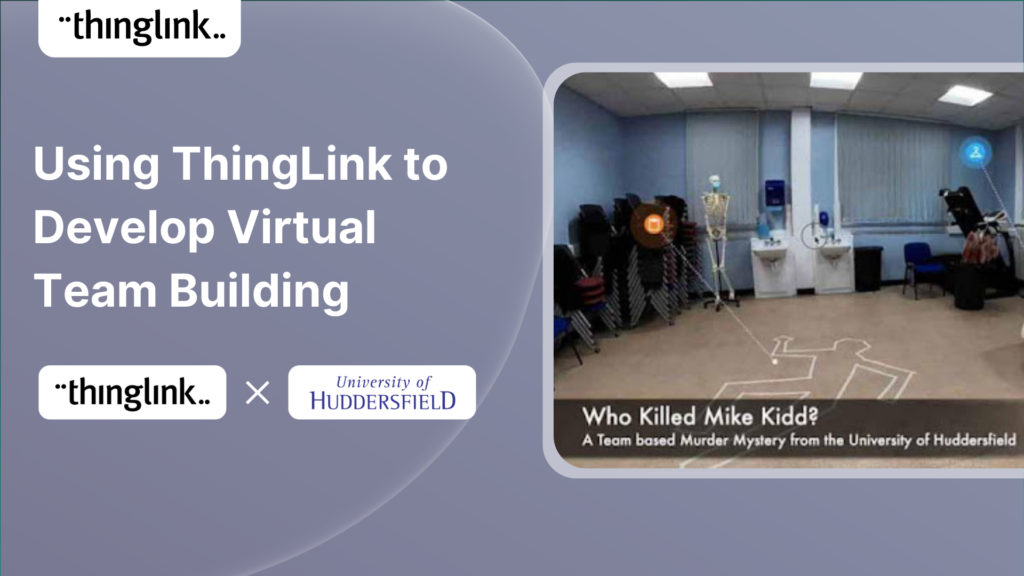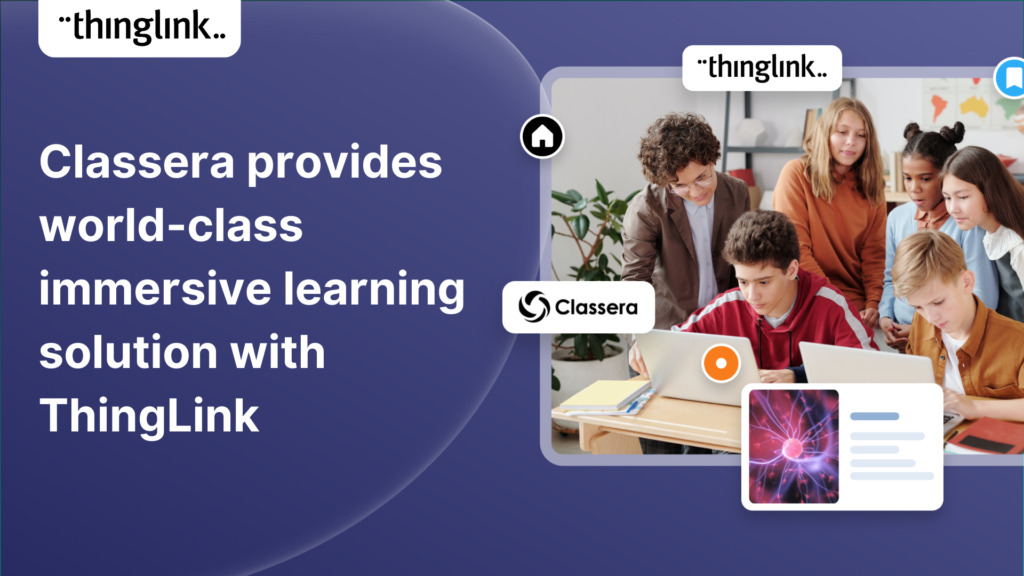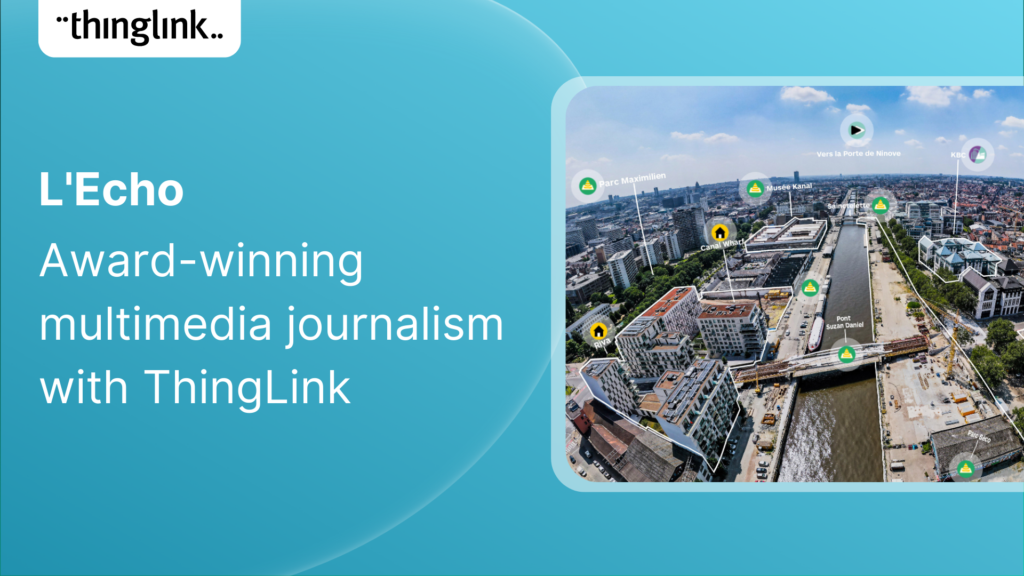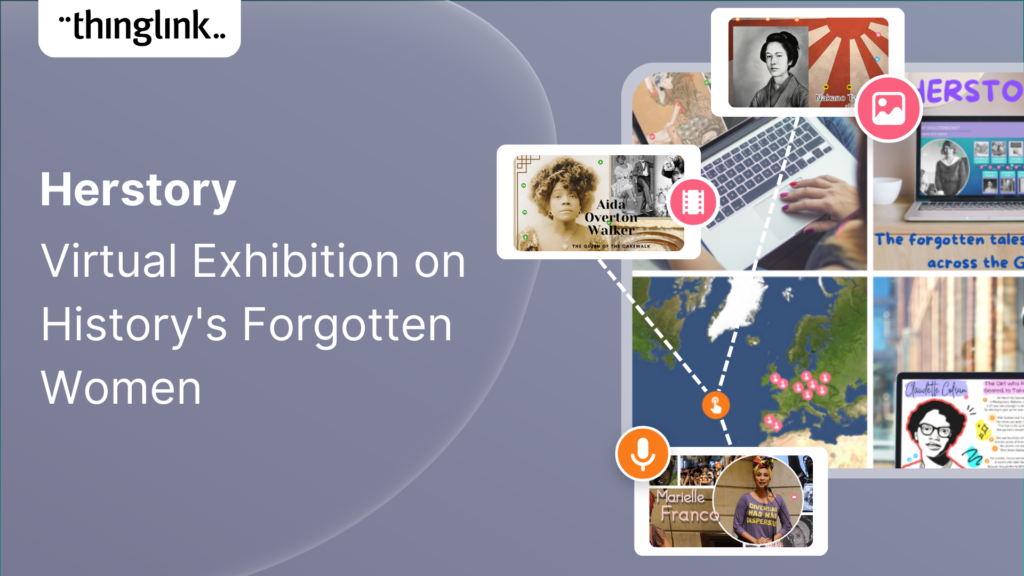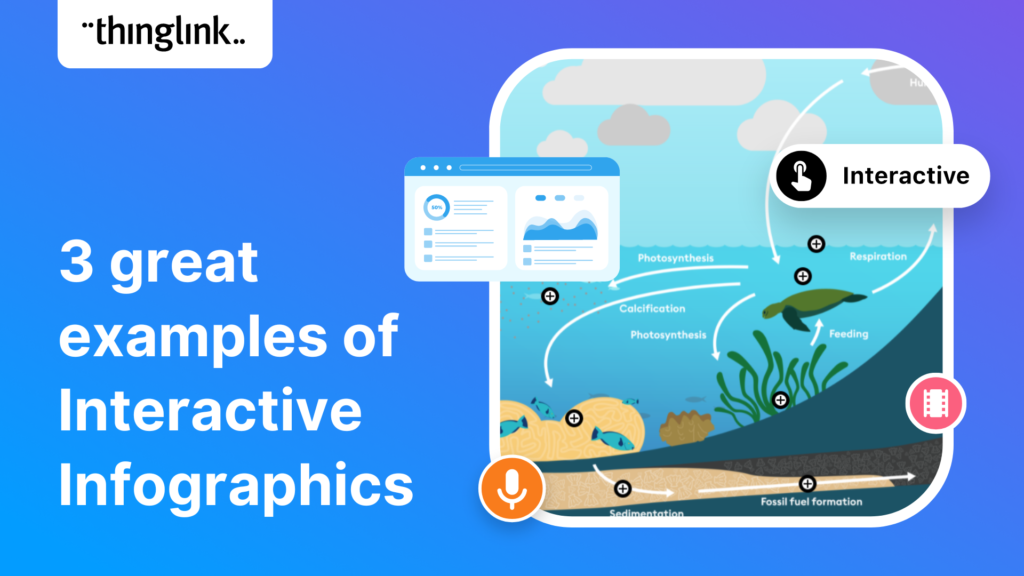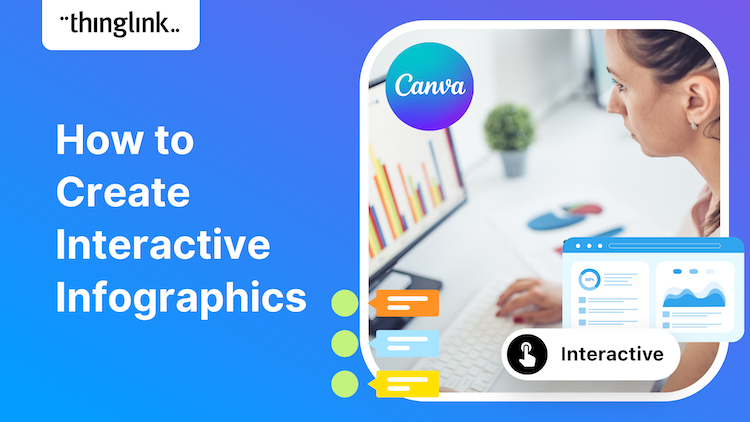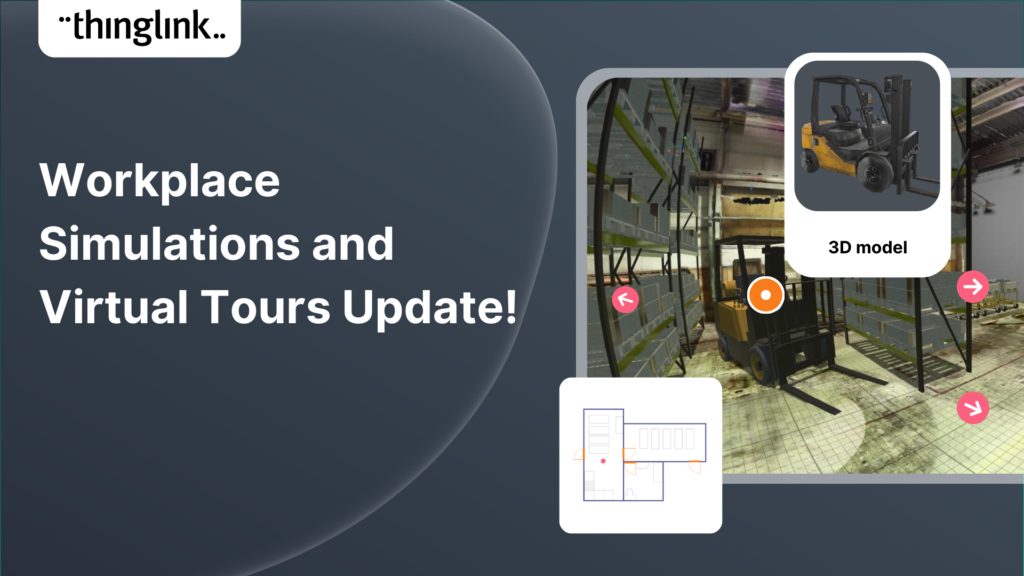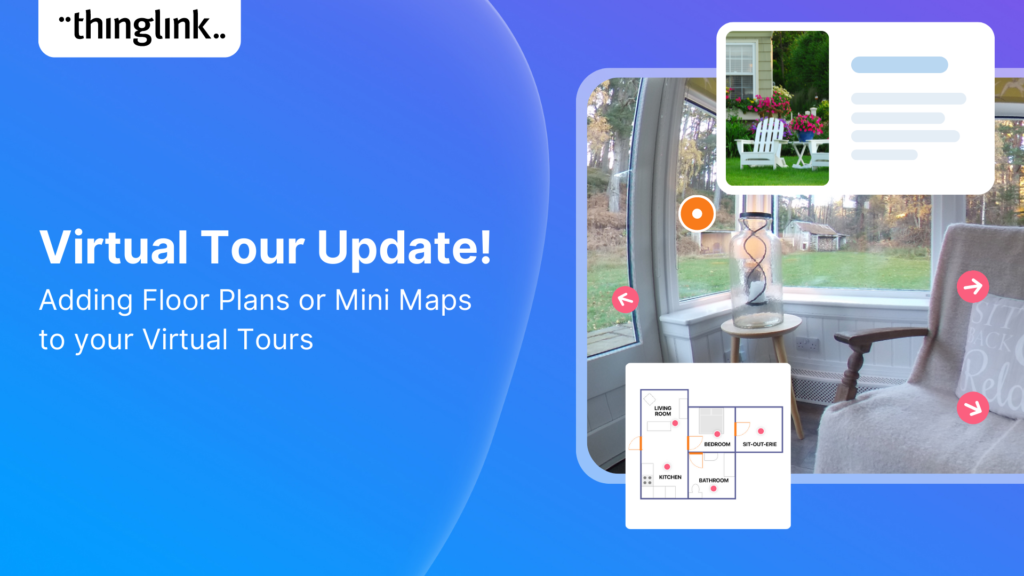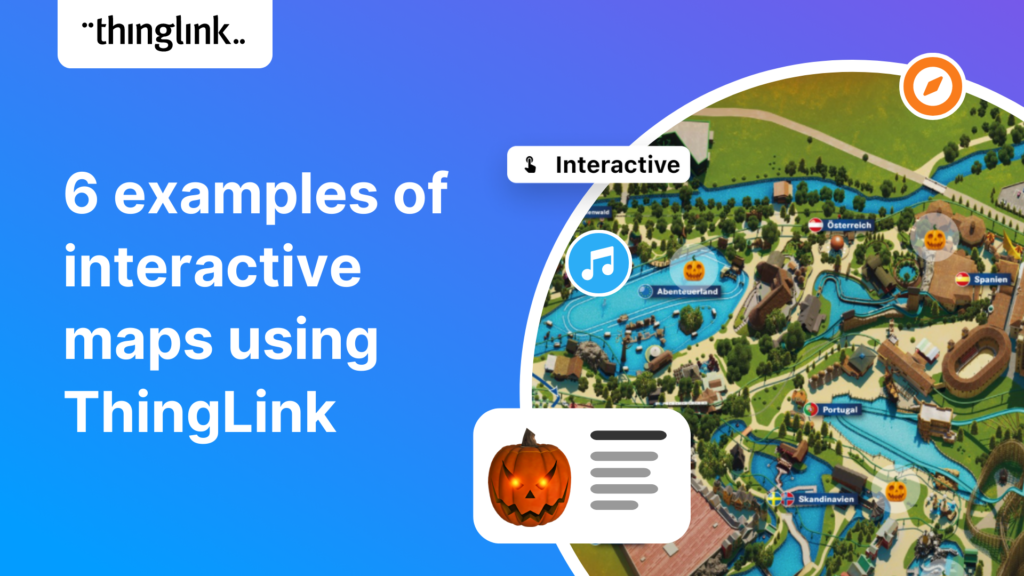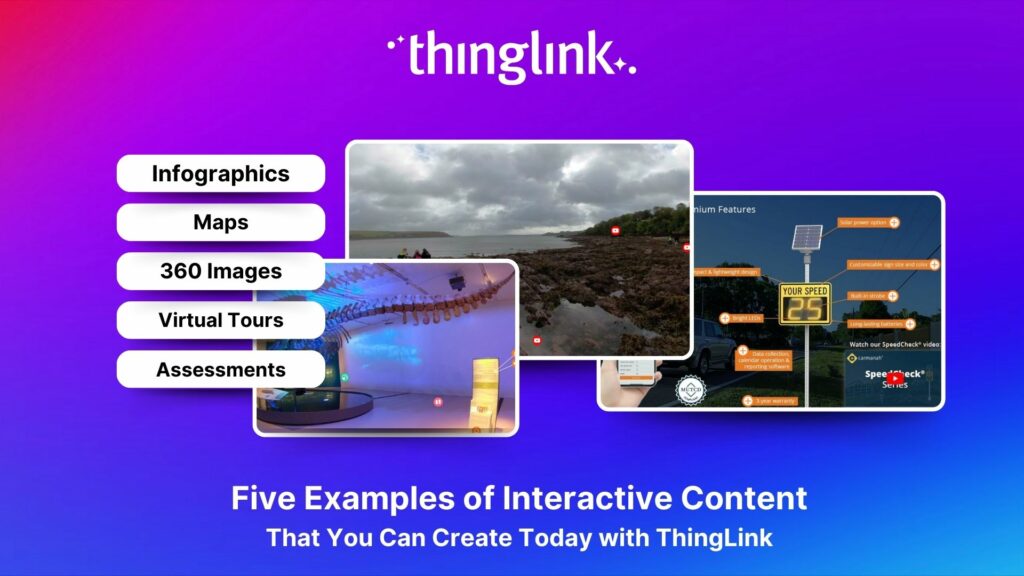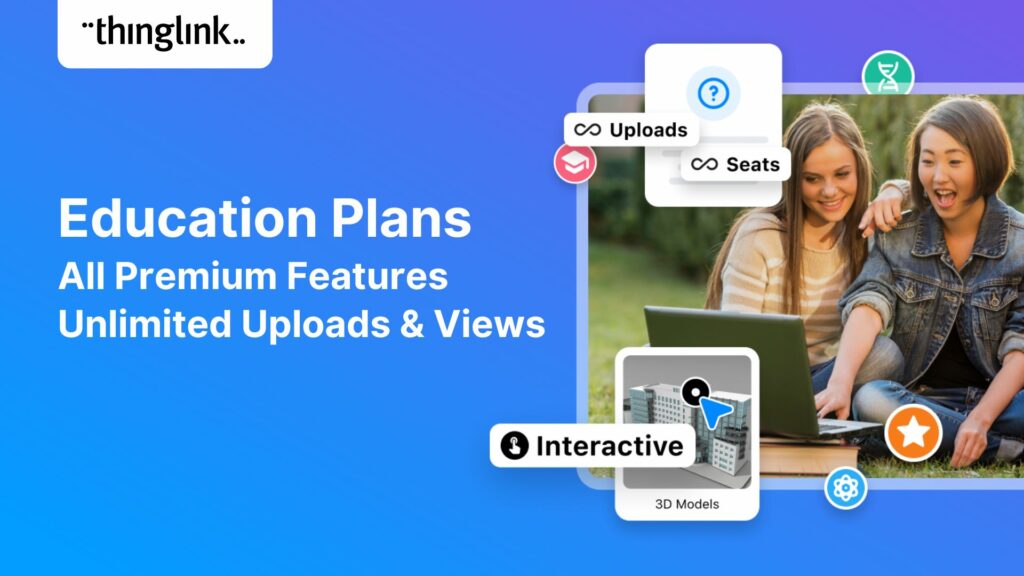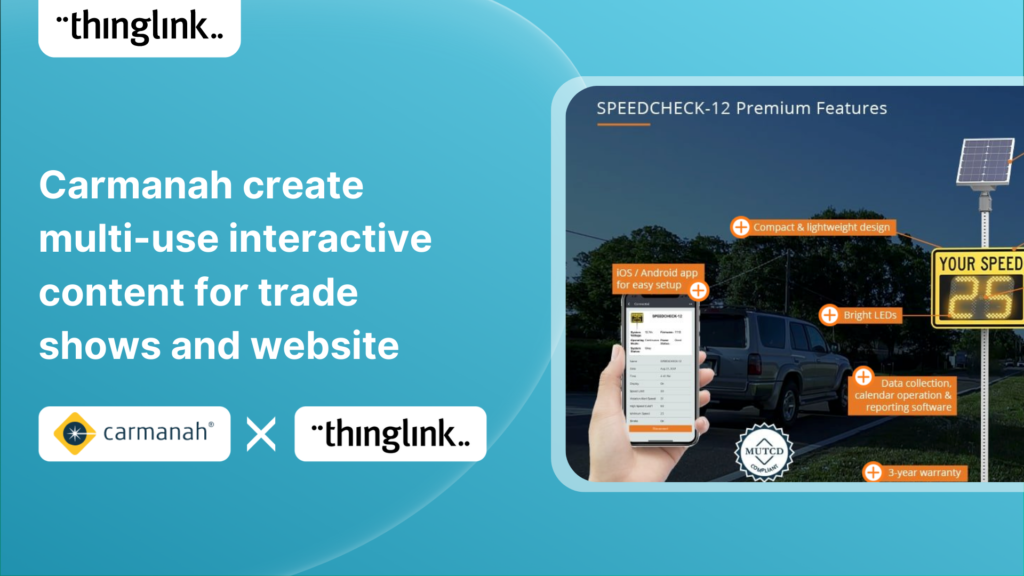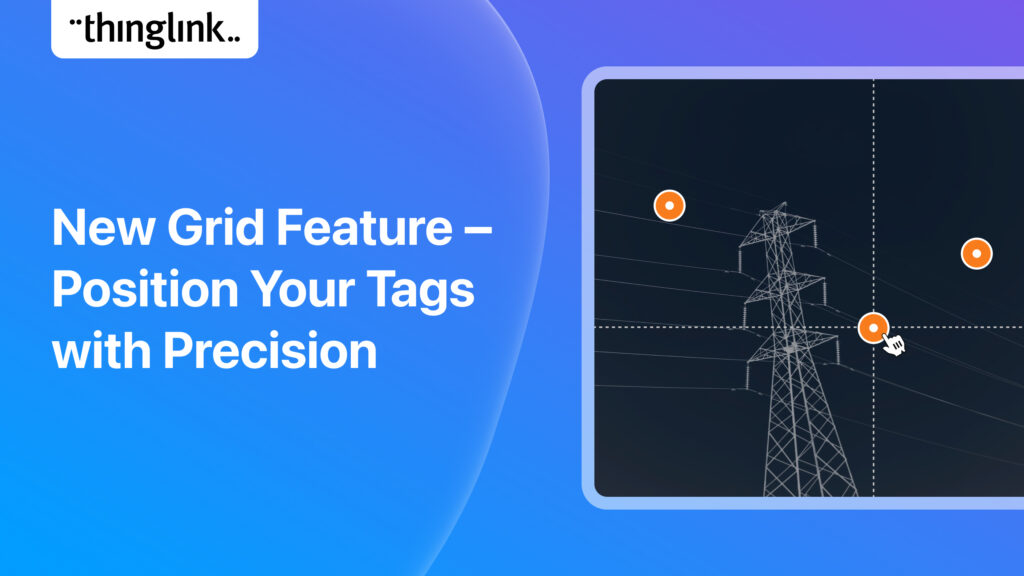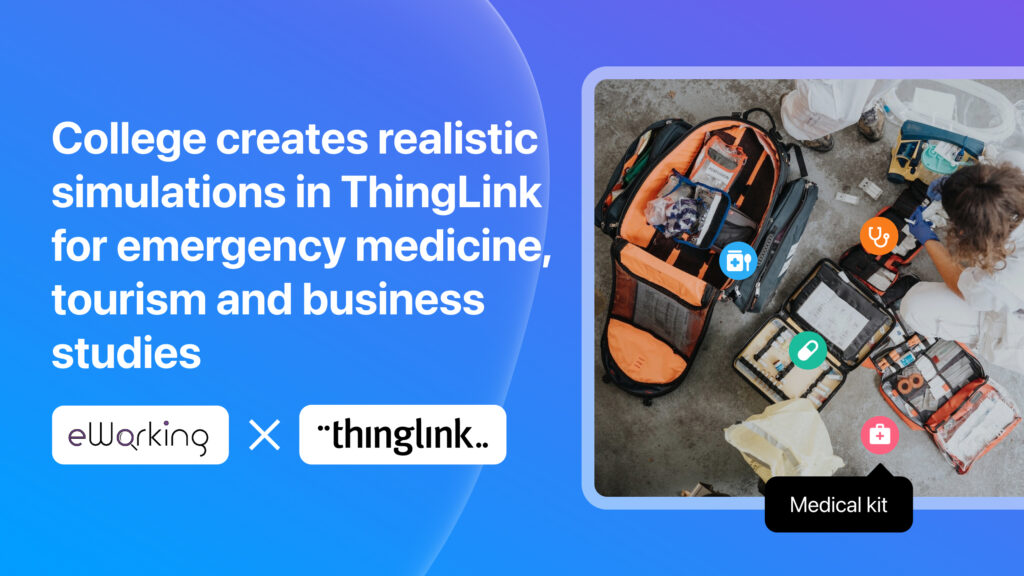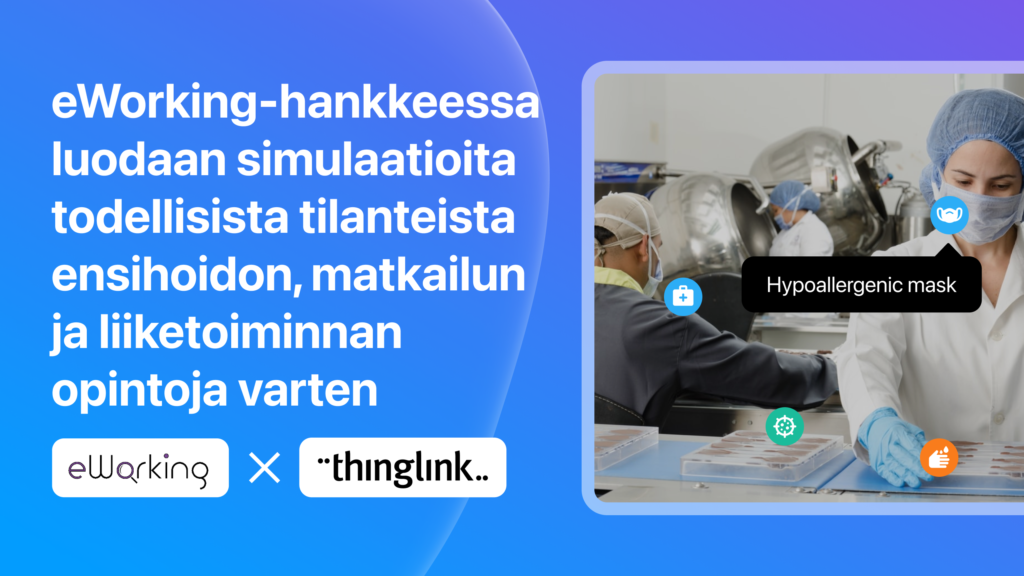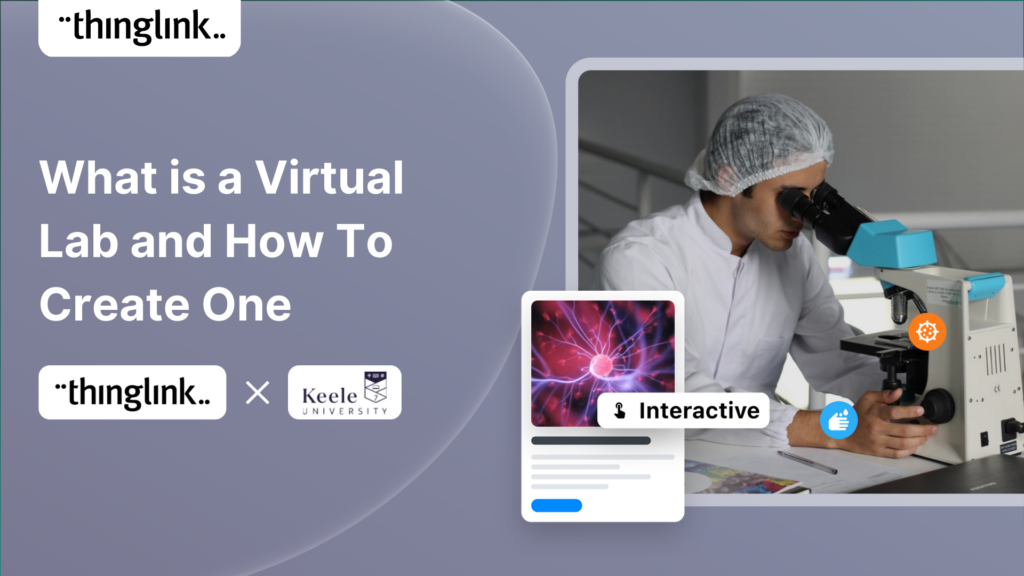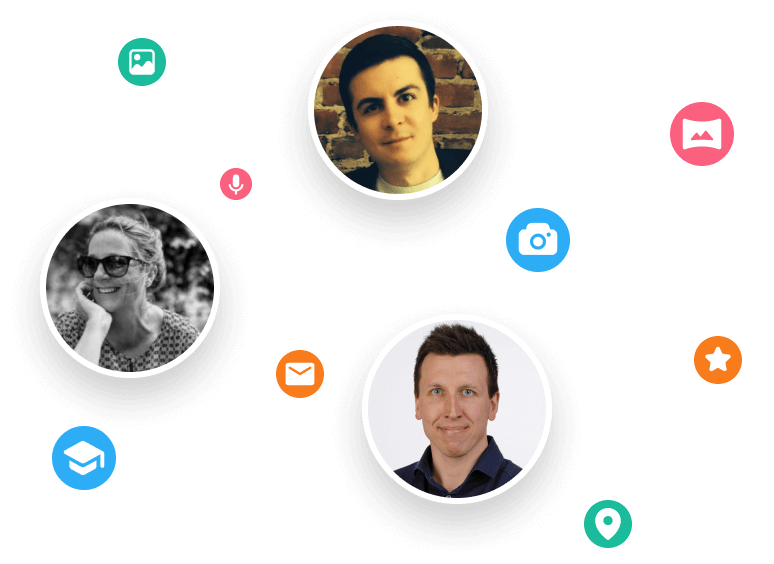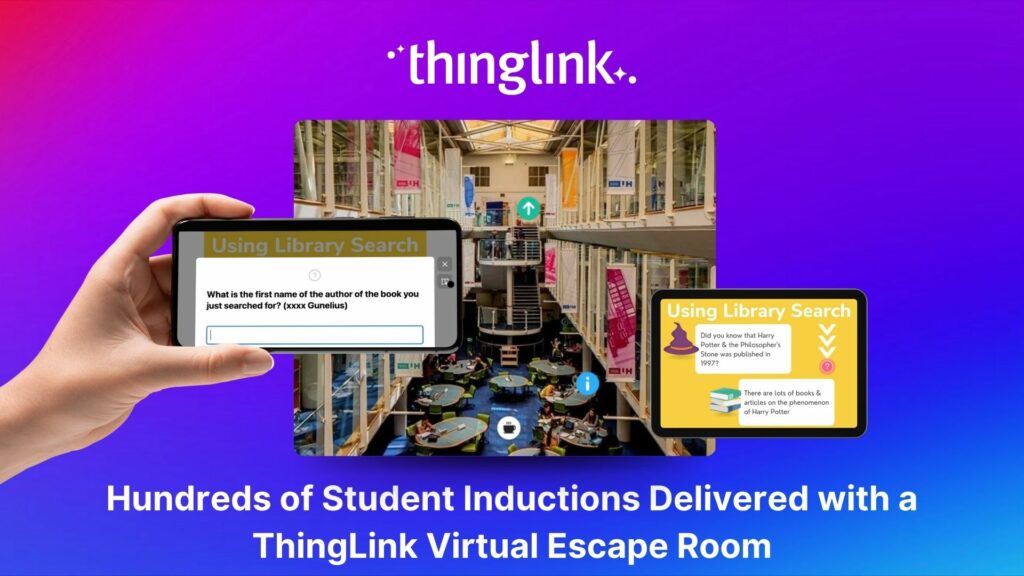
Hundreds of Student Inductions Delivered with a ThingLink Virtual Escape Room
Louise Conway, Information Manager at the University of Hertfordshire (UK) has created an ingenious, engaging virtual escape room to ensure that new students are confident in locating and using the wide array of resources available to them across the two Learning Resource Centres (LRCs) on campus. The escape room acts as a self-guided, group-based, and gamified learning resource which has significantly reduced the staff time previously required for in-person tours at the start of each semester.
Background
The University of Hertfordshire is situated around 20 miles to the north of London and currently educates nearly 35,000 undergraduate and postgraduate students across a very wide range of subjects, including health and social work, law, business, engineering, sport, education, creative arts and the sciences. Historically, each new student who arrived would be given an in-person tour of the university Learning Resource Centres as part of their induction programme. However this was proving extremely costly and increasingly difficult, in terms of staff and room resourcing.
Book a free consultation
If you’d like to learn more about how you can save resources and effectively support learners with impactful interactive experiences, schedule a free call with one of our Education specialists.
The challenge: hundreds of staff hours taken up delivering tours
Traditionally, the tours would be delivered over a two week period twice a year, at the start of each academic semester. Given the number of learners who had to complete the activity, the LRC originally required up to 15 staff members to be trained up and available to conduct the tours. As well as the time taken to conduct tours, each staff member had to undertake additional training time, to learn the script and route to ensure that all crucial information was delivered, in the right way, and at the right time.
Since 2021 there have been fewer staff available to help with tours, but still the same number of students requiring inductions each year. Often the groups arriving for induction would number between 30-50, requiring 3-4 staff members to conduct concurrent tours in small groups. This took time away from staff to help other students in the LRC. There were also other logistical challenges that emerged. After the tour, the groups used to use a classroom at the LRC to complete the learning activity. However the classroom was subsequently made unavailable, and whilst the tours were still offered, this meant that a key element of the learning experience was now missing.
In such large groups, it was difficult to ensure that all students had fully achieved the learning objectives. The students were being shown around the physical areas of the LRC, but they had no opportunity to try out the process of applying and testing their new knowledge by locating and using the resources themselves. It was also a “one and done” activity for each student, mainly because of the intense pressure it placed on the staff.
The search for a solution
Louise began testing online alternatives for the tour in early 2022. Her initial trials using Microsoft OneNote and Forms, and Google Forms, proved unsatisfactory, given the inability to effectively link out to or embed external sites and apps. She saw ThingLink demoed as a digital escape room at a conference in June 2022 and realised that the LRC could use the platform to create their own virtual escape room experience which could solve the challenges they faced with the group tours.
Creating the virtual escape room in ThingLink
After having only seen ThingLink in action in June 2022, Louise set herself a target of having an interactive escape room ready for new students in September. It is testament to its ease of use that as a complete beginner, she made the deadline. She created the original background visuals herself in Canva, and it took Louise 3 months in total to complete, working on the resource part-time alongside her other projects. The activity was launched in September 2022 and has been used for inductions ever since, with regular updates to content made by Louise or members of the Assistant Information Manager team as required.
How the virtual escape room is shared
The escape room is now located in the University’s Canvas LMS in the Library SkillUP module, which is promoted at each new student’s induction, and also linked to by many of the academic staff. Students complete the activity either individually or in an assigned group of 5-6, at a mutually convenient time, by a given deadline. The link to the escape room is also shared around the LRC via QR codes on leaflets and screens.
How the virtual escape room works
This example is a clever combination of online escape room and physical escape room. On arrival at the LRC, each small group starts the escape room game, usually with one student taking the role of “keeper” of the game via the Canvas app on their phone or tablet. In fact, Louise designed the visuals and gameplay with mobile devices in mind, to allow students the flexibility to move around the LRC freely.
As they work through each section, the students are introduced to and shown how to access useful resources both within and outside the university, such as AskHerts, Library SkillUP, YouTube, MS Forms and Library Search. They are also given handy skills and tips along the way, as well as opportunities to sign up for online courses such as the Library SkillUP module.
As the game progresses, they need to locate and move to various sections of the physical LRC to gather clues and information, similar to a scavenger hunt. Moving to each new section in the game is conditional on the students correctly answering quizzes and puzzles. Only by entering the correct answers found in both the digital game content, and in the LRC itself can they open the digital locks and progress.
Saved hundreds of hours of staff time
The ThingLink escape room has transformed the delivery of the LRC training, by drastically cutting back on the number of staff hours required for the tours. Although the staff are still able to provide in-person tours on request, these are extremely rare, with one or two being requested each semester. This has meant that the staff are now able to support other students in the LRC more effectively.
As well as the time given up to conducting the tours, the virtual tour has saved the training time that used to be spent at the start of each semester to cover any new tour content or additional information. In addition, so far there have been no requests for additional help from staff in accessing the escape room content, as the students find the platform extremely easy to use and navigate.
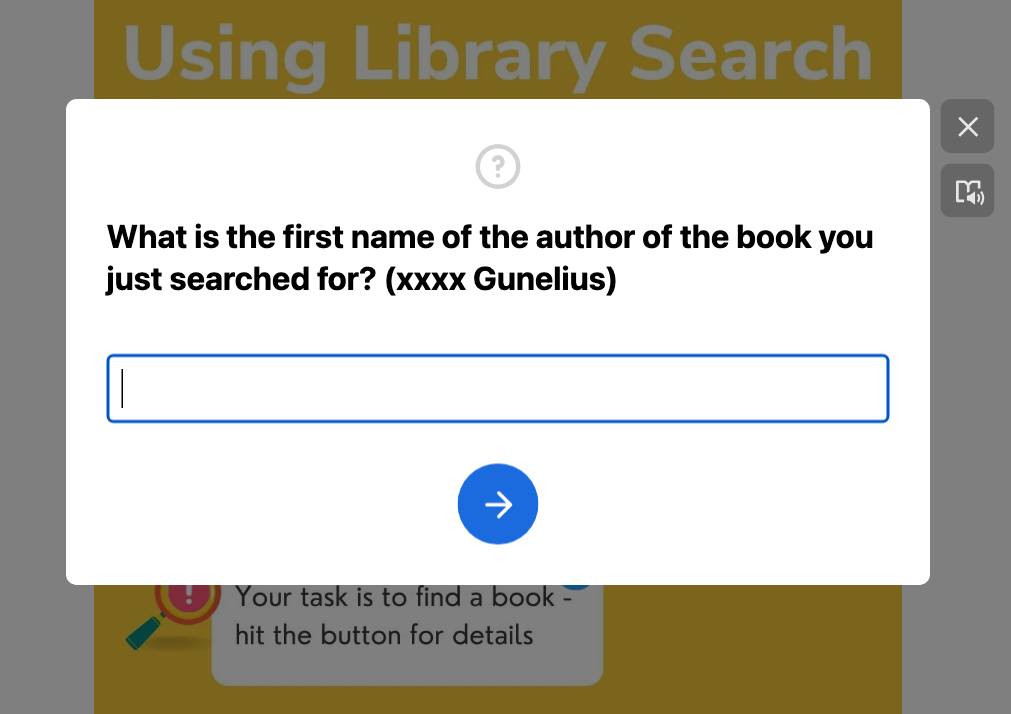
How else has the virtual escape room benefitted the staff and students?
By completing the escape room challenge in this way, the LRC have provided multiple opportunities for the students that simply weren’t provided using the previous approach.
- The activity acts as an icebreaker for new students at the very start of their time at Herts, encouraging them to get to know others on their course or year group.
- The gamification of the activity provides a powerful team building opportunity, which helps the students establish friendship networks whilst away from home for possibly the first time.
- The problem-solving and teamwork aspects of the escape room are key collaborative working skills which will prove valuable to the students throughout their study and future careers.
- Previously the students were simply shown the important information in the LRC, but with this new approach, they are required to actively apply their research skills, which will embed the learning experience far more effectively.
- The students can revisit the escape room whenever they need to, and make use of the links out to useful information should they need a reminder.
- It has helped to promote digital skills amongst the students, and is overall “a much better student learning activity” than the previous in-person tour.
- Students can complete the tour in their group at a time that works for their specific timetables – meaning that visits are staggered and there is no overcrowding of the LRC.
- The feedback form which the students can only access once the escape room is complete has provided extremely positive responses.
“ThingLink has been a fantastic addition to our start-of-term activities, receiving overwhelmingly positive feedback since we launched the escape room in 2022. This success has allowed staff to dedicate more time to students during these busy periods in the academic calendar.”
Louise Conway, Information Manager, University of Hertfordshire
How else could you use this escape room approach?
This combination “mixed reality” escape room approach could be used as the template for a wide range of learning activities – not only in higher education, but beyond in employee training and development. It demonstrates that whilst virtual escape rooms are most commonly seen as a purely online learning approach, the versatility and cross-platform capability of ThingLink allows the game to be completely portable. This approach allows for a “scavenger hunt” activity incorporating real environments, objects and information by optimizing the escape room for mobile devices.
For a competitive approach, ThingLink Scenario Builder allows you to add a timer to your escape rooms, scenarios and games, meaning that teams could race each other or against the clock to reach their final objective.
ThingLink content creation is now even faster and more streamlined thanks to the arrival of AI-assisted content creation tools. These include integrated text to image 2D and 360 image generation tools, and easy conversion of your existing materials into interactive learning materials in minutes. Read more below.
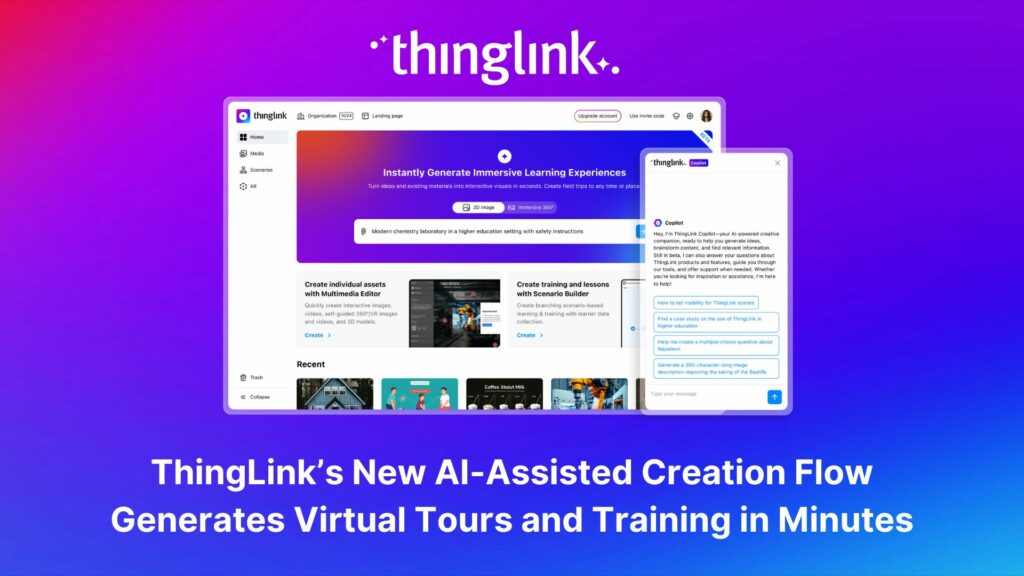
Case Studies
Take a look through more escape room ideas and other interactive content from our community of creators below.
